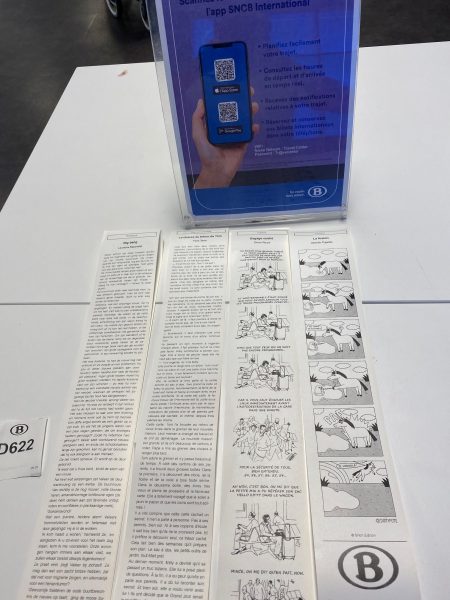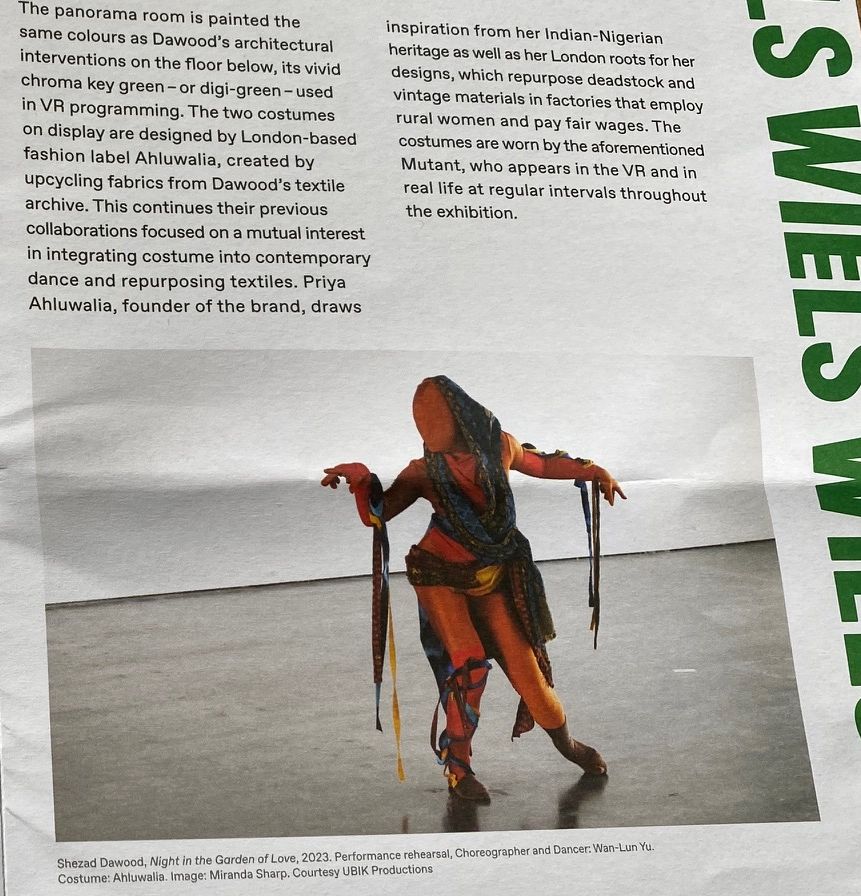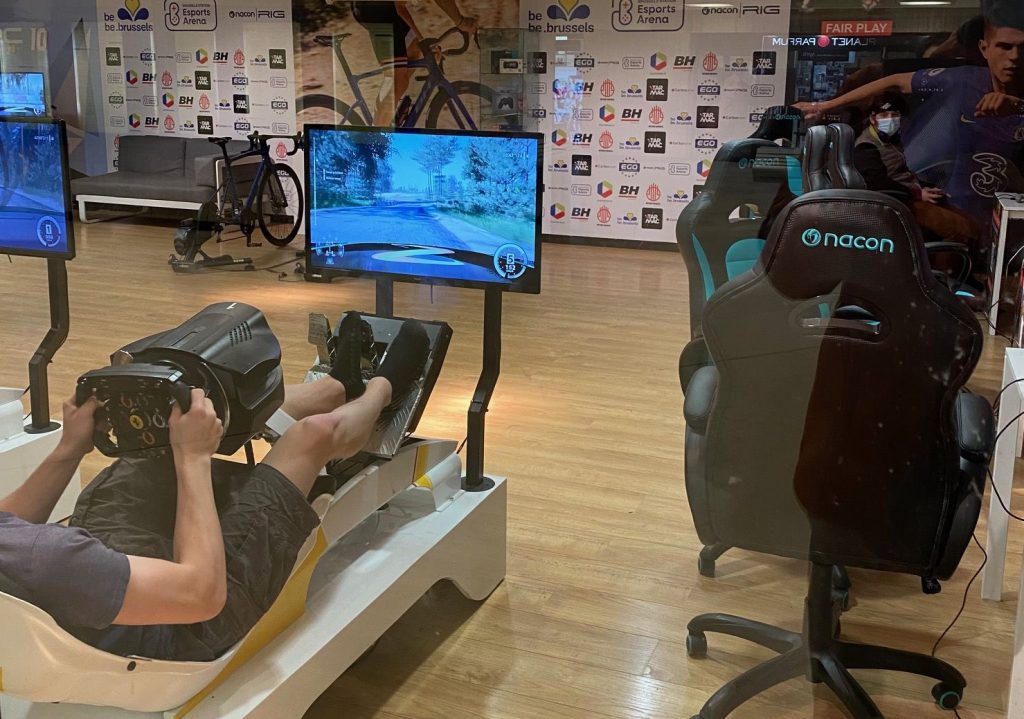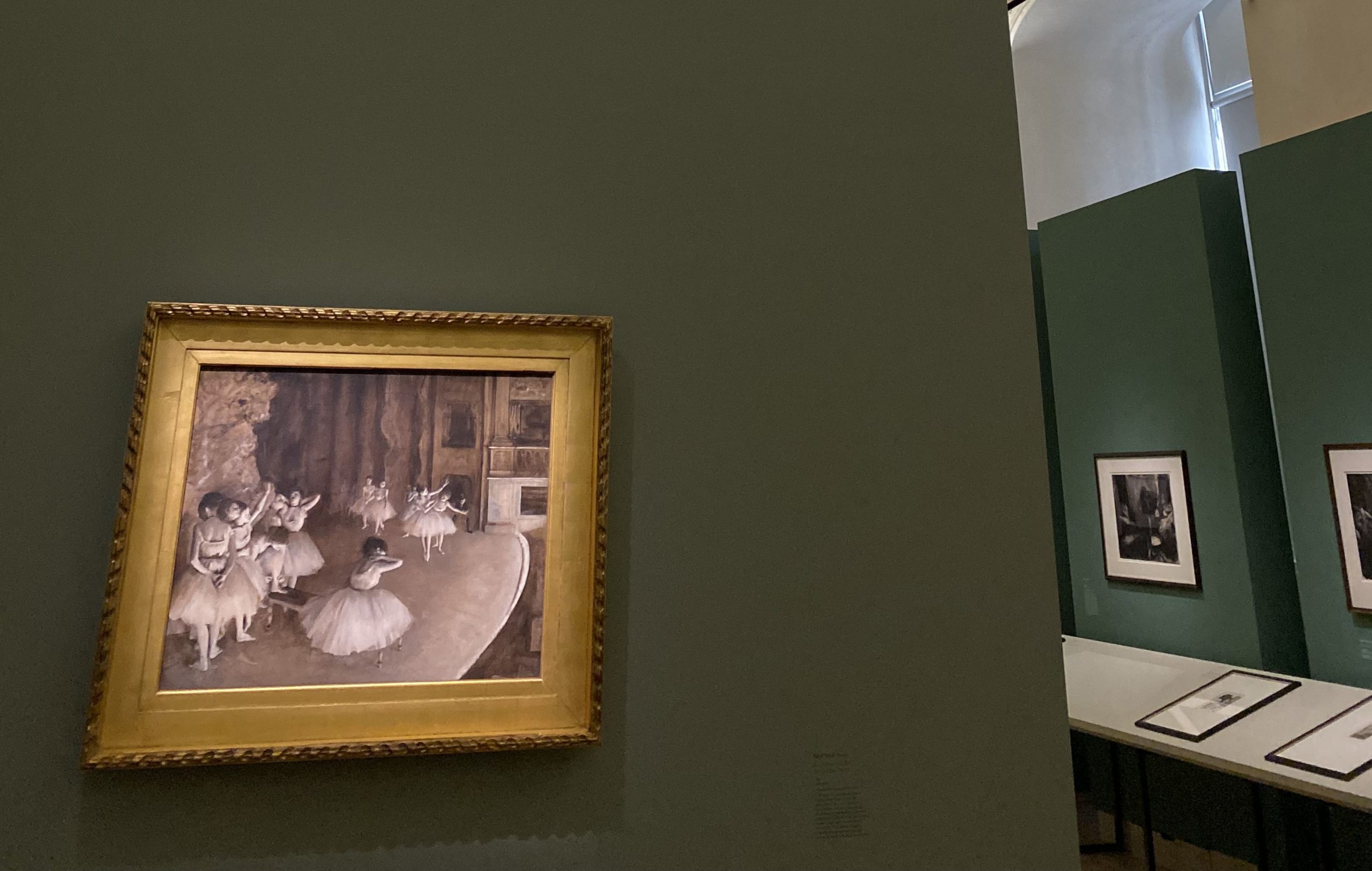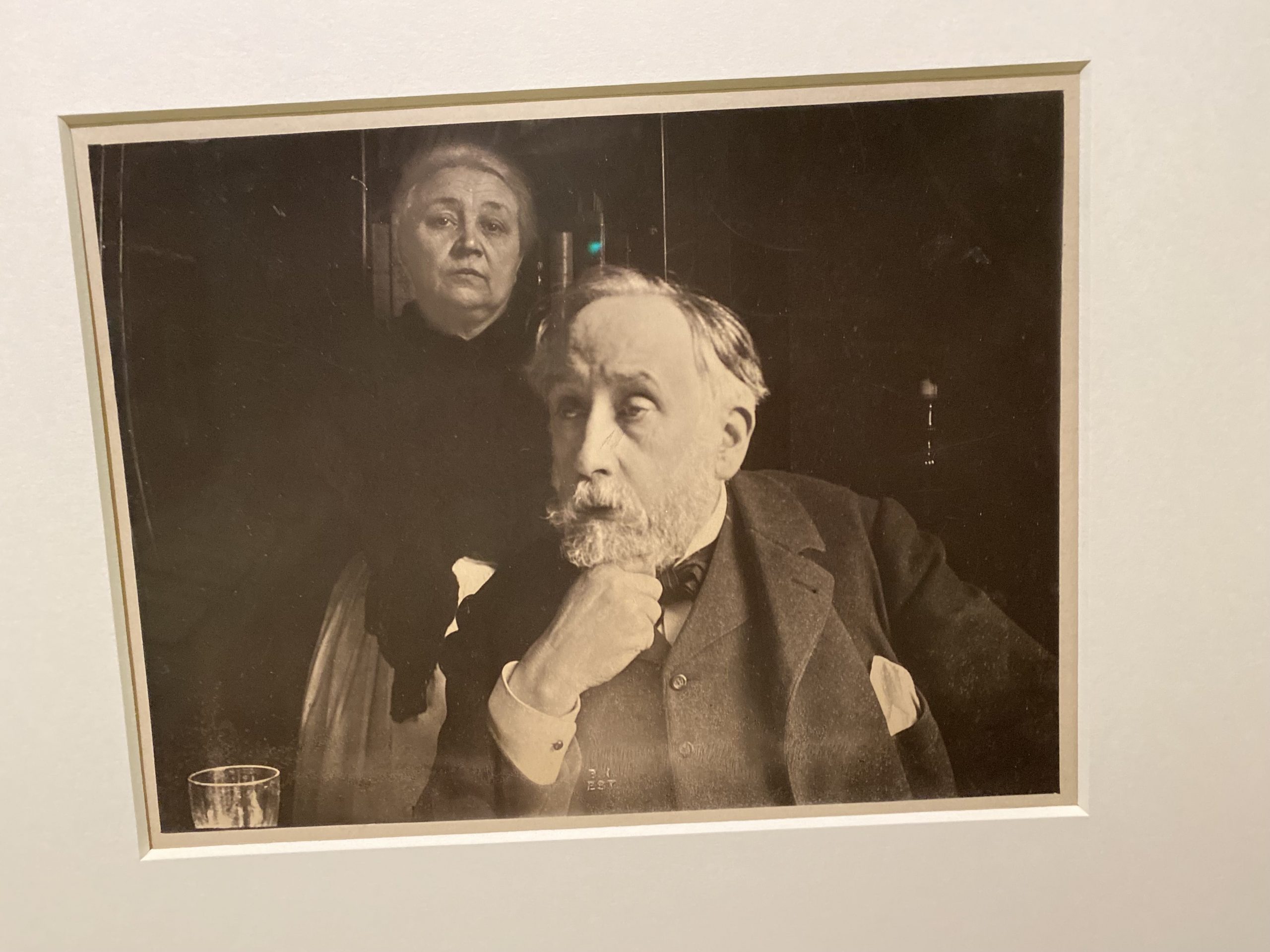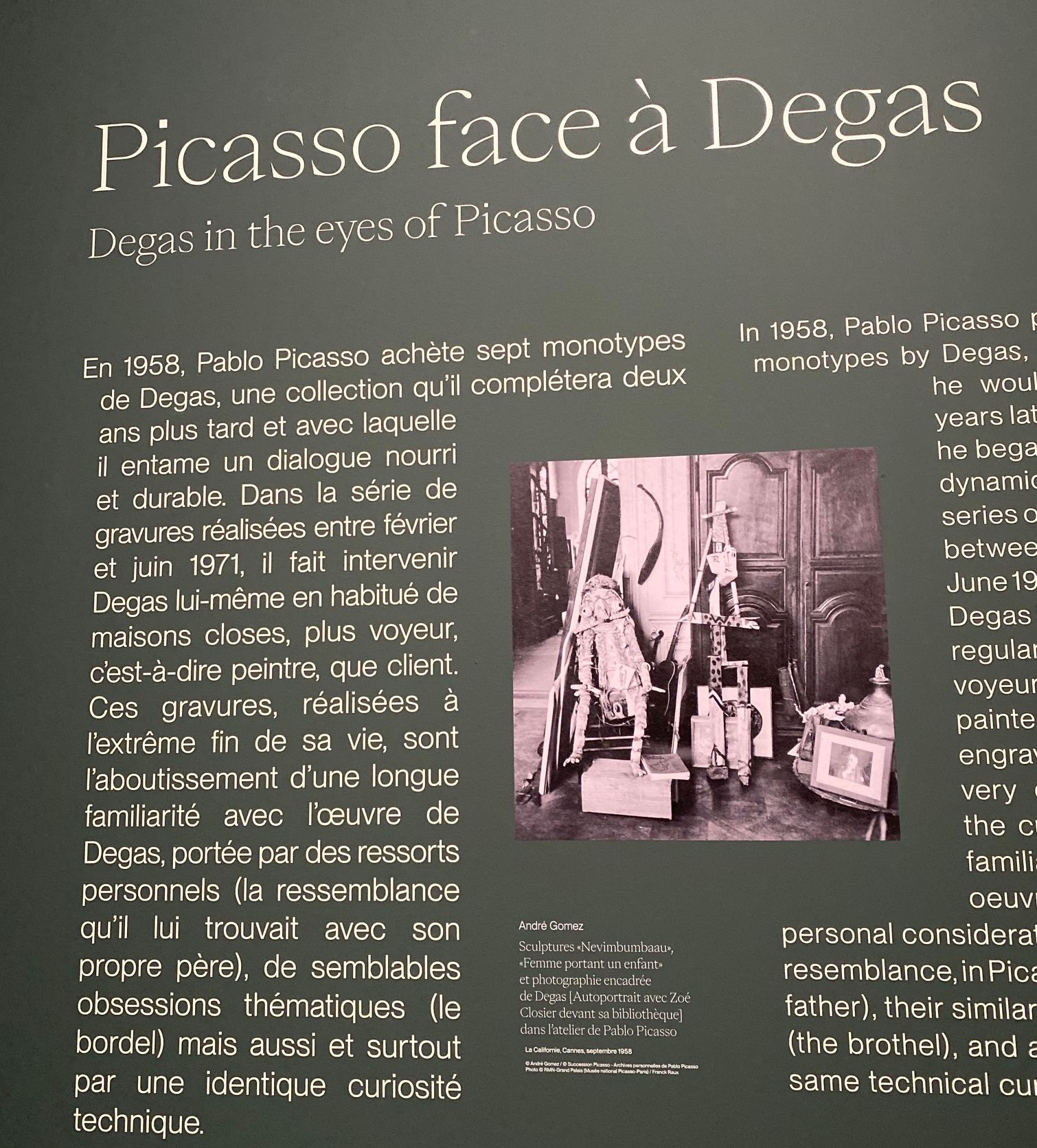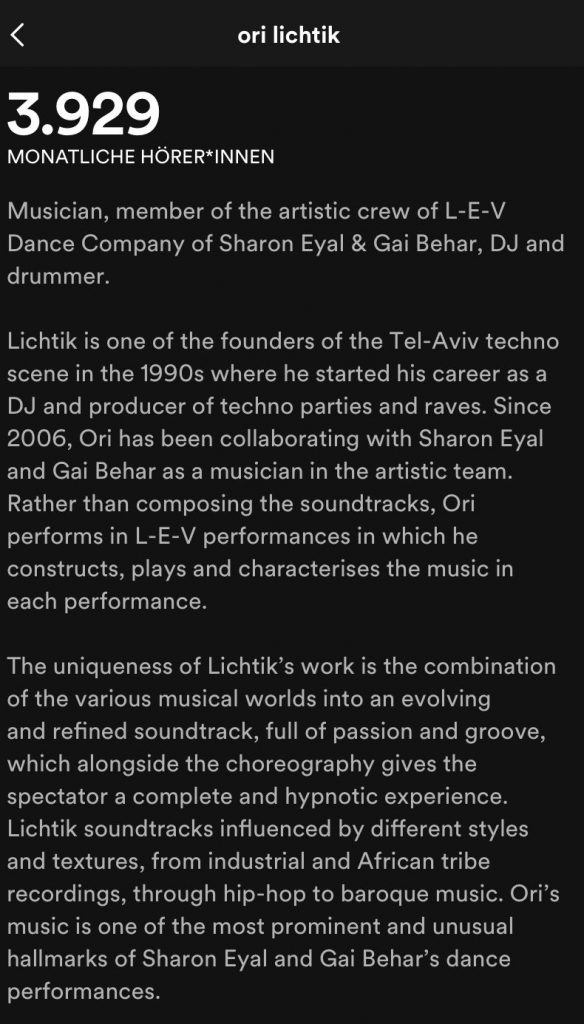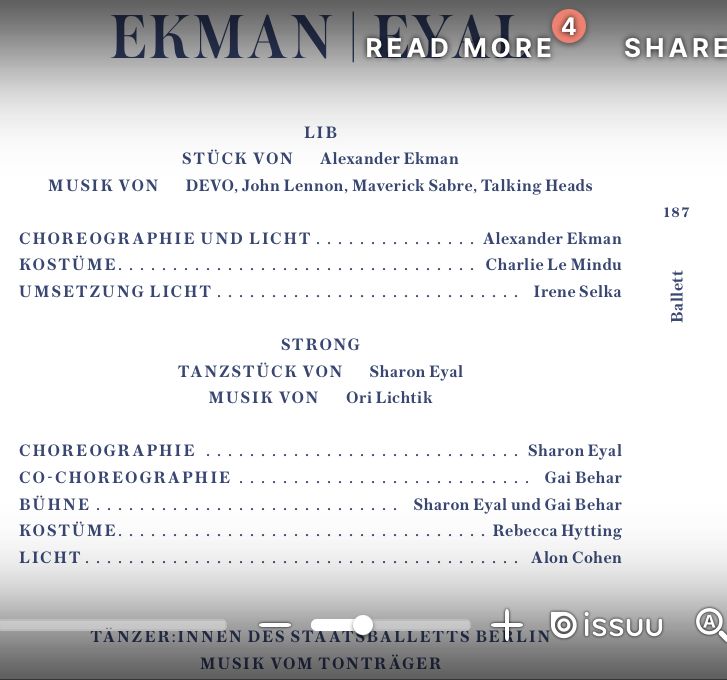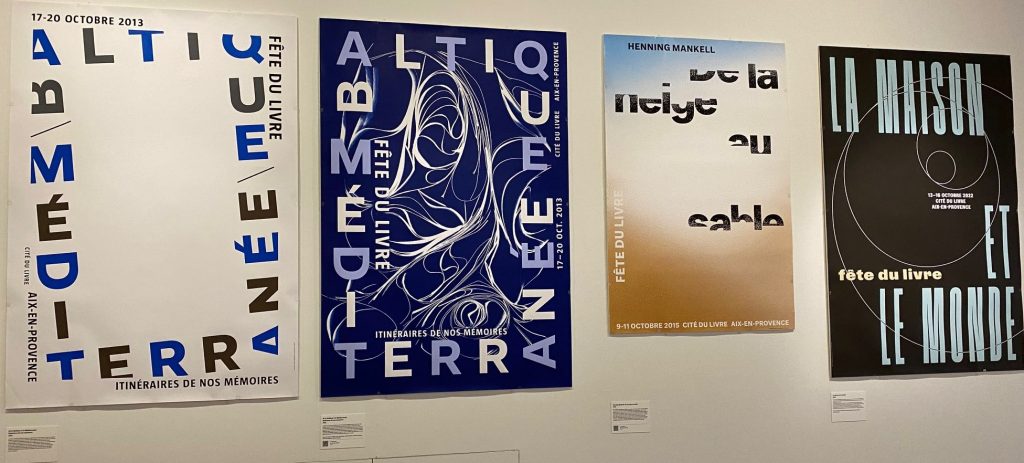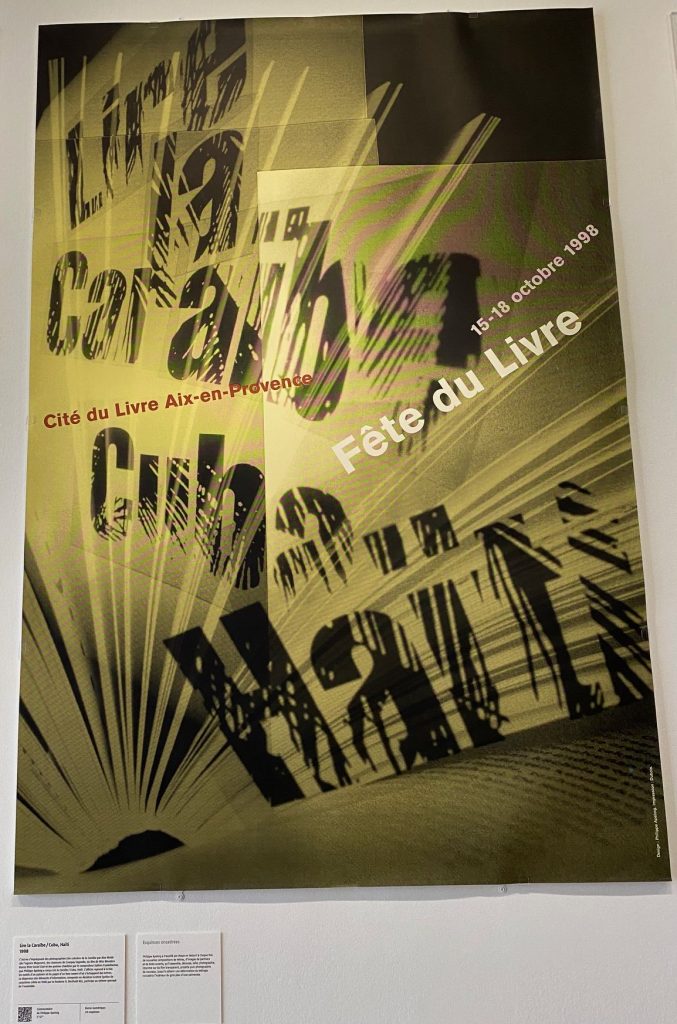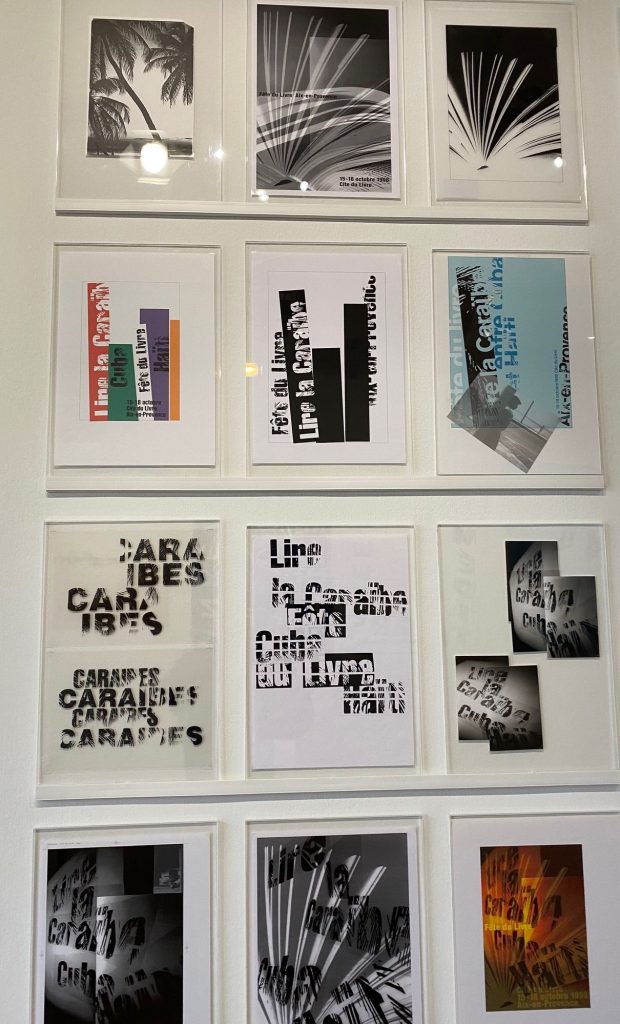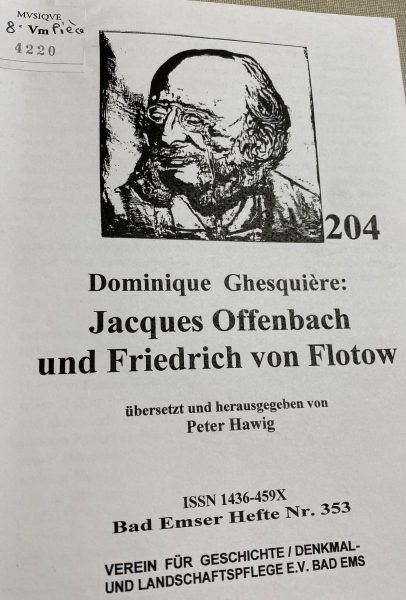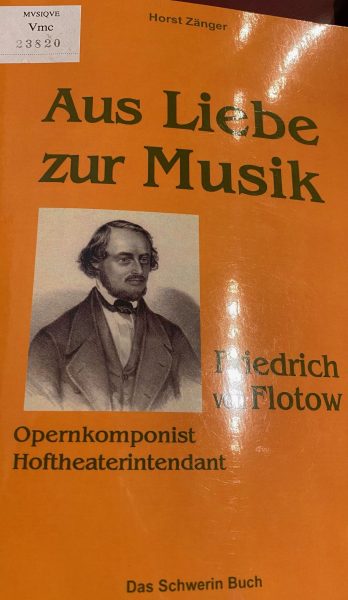A poster announcing the “internationales literaturfestival berlin 2023” prints in big letters: “Read, read, read, … 14 times”. This is a quote from Werner Herzog when he was asked what makes a good filmmaker. The message from Manjeet Mann to the young audience at Berlin added to this: “write, write, write”. At least this was my impression as a summary of the talk and her short readings from her novel in verse “The crossing”.
The lecture hall of the “Stabi” was packed with students from high-school who felt at ease with the English language presentation and talk. The host Shiva Mesgarian managed to get the crowd of students to ask questions in the huge lecture theatre. 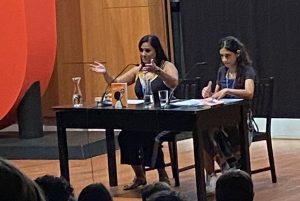 Manjeet was giving a lot of insights into writing, editing, motivation and the difficulty to give a voice to persons from marginalized backgrounds. In her case as a person of colour herself, born and raised in England with additional links to India, she took issue with the topic of refugees. Living in Folkestone (Kent), she is confronted with people crossing the Channel on a daily basis.
Manjeet was giving a lot of insights into writing, editing, motivation and the difficulty to give a voice to persons from marginalized backgrounds. In her case as a person of colour herself, born and raised in England with additional links to India, she took issue with the topic of refugees. Living in Folkestone (Kent), she is confronted with people crossing the Channel on a daily basis.
Her book “The crossing” is actually building bridges between countries and continents. Her entertaining way to talk about her hard work as writer motivates, inspires and encourages young persons to pick up their pencil and/or notebook to start writing. Just don’t stop. Journaling helps. Take your emotions of an issue seriously, then work on it. Give characters a voice who have not received much attention. Go out and interview persons to get authentic input.
It is not about appropriation of a story. It is about meeting and exchanging with marginalised persons. Return your written pieces to those “sensitive readers”, whose story you attempt to develop. All this takes time. Re-writing is an important element as well. “Having written the story for yourself, you then re-write it for the readers”. Edit, clarify, sharpen, blur, attend to detail – all this helps the reader to follow and enjoy. These were the messages to all the students who were grateful for advice as the new season of essay writing in school, university and beyond is about to start. 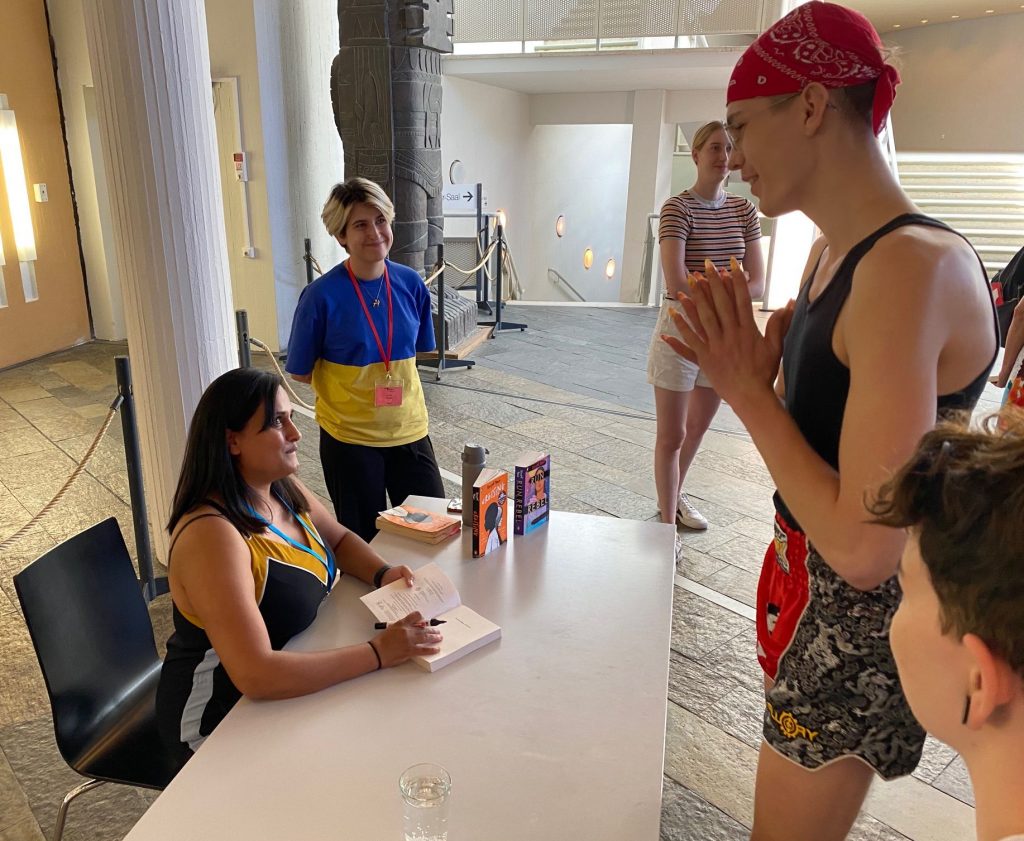
Poetic Coffee Break
The rather stiff and rigid structure of the “Staatsbibliothek” in Berlin does not yet have a reputation to be a place of poetry, translation of poetry and recitals. This is about to change. As a student, researcher or lecturer I would have adored to see my library proposing a poetic coffee break. I would have gone for the necessary break in the afternoon, the coffee and, okay why not, a poetic experience. This time it was different. The organisers, “ilb and Stabi” got together and Ursula Jäcker together with Michael Bucher presented poetry from Shakespeare (Sonnet) in English followed by the German translation by Wolf Biermann.
Translating poetry is a very tricky thing. Just try it yourself and you will be full of admiration for the admirable work of translators of words, sentiments, rhyme and rhythms. The presentation of Biermann’s comments on his own work on translating Shakespeare’s sonnets gave interesting additional information on the short and precise English original and the longer, somehow fat translations into German (Biermann’s words). Thanks for the indication that Biermann deviated from the Shakespearean “iambic pentameter” to add a sixth foot most of the time (to be checked OMG). The choice of numbers 6, 18, 27, 66, 73, 76, 121, 147, 154 from the Shakespeare Sonnets were witty and entertaining for a coffee break. For example, from 27:
“And keep my drooping eyelids open wide,
Looking on darkness which the blind do see:…”
Also, from 76:
“Why write I still all one, ever the same,
And keep invention in a noted weed,
That every word doth almost tell my name,
Showing their birth, and where they did proceed?”
More than 400 years ago, these rhymes were drafted and still today writers and learners, at the Stabi and beyond, can somehow identify with the intricacies of the process of creative writing.
More of this, we need, today and for tomorrow. THX. 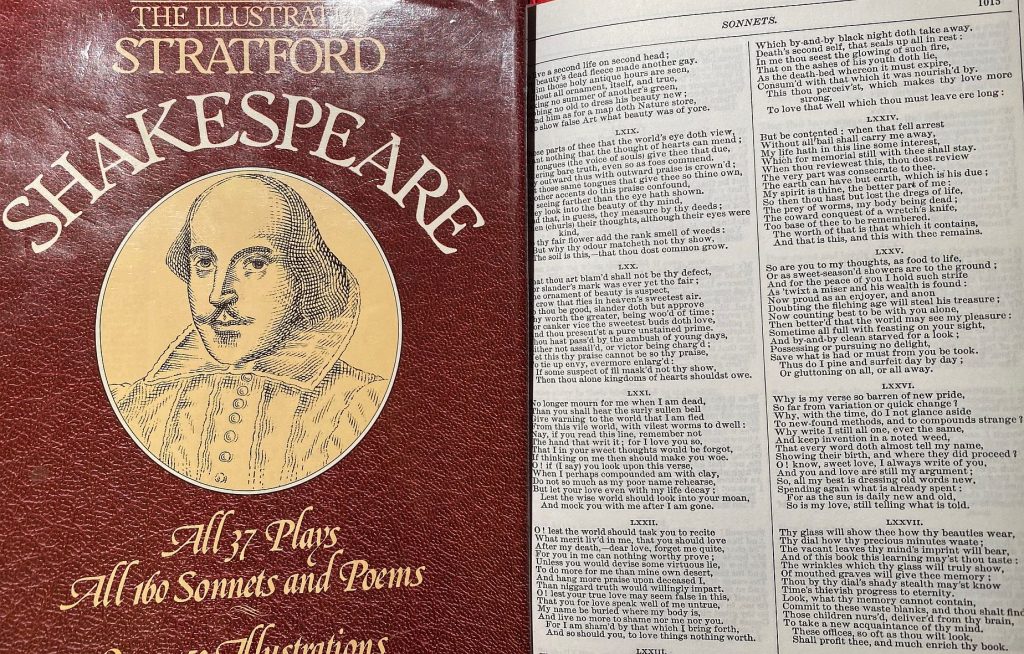
Princess
Berlin is proud to present its princesses after a marvelous lifting. Yes, in the middle of the barbie hype, Berlin exposes two of its princesses of the late 18th century. And you can touch them, if you like or dare to. They don’t bite. I have not seen anybody kissing them either, except for a Spanish football president. All this is happening in the Museum Church Friedrichswerder designed by architect Schinkel an built until 1830s. The grouping of the two sisters was unusual for the time and only the inscription at the bottom introduces the distinction that Louisa on the left is the princess heriting the throne. Frederica on the right is wearing a different foot wear, considered less noble. The privilige to touch the princesses applies only to the smaller copy in front of the image below with “Braille inscription”. The original is further behind. Of course, this one is protected against unwanted contact with the masses or “followers”. At the time “follower” still had a different meaning from today.
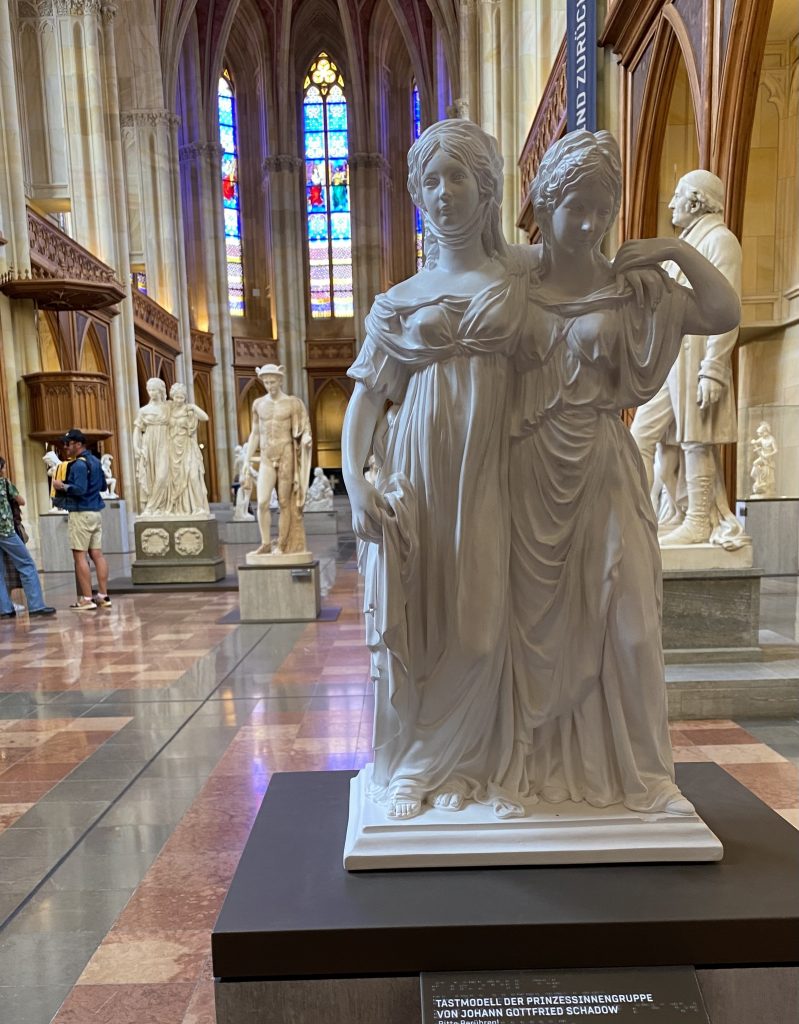
Bogenspannerin
Seit der Antike sind Bogenschützen und Archer ein Thema der Künste. Meistens ist die männliche Repräsentation die dominierende Variante. In Berlin lässt aber auch seit langem eine starke weibliche Realisierung bewundern. Nahe dem Pergamon Museum und der Alten Nationalgalerie steht die Statue der Bogenspannerin. Die Zielrichtung geht Richtung Hedwigsdom, als ob der Kampf zwischen Kunst und Religion ein andauernder wäre. Erfahrene Stadtzeichnerinnen, aber auch Jugendliche fühlen sich dadurch angeregt. Kunstschaffende können einen nachhaltigen Einfluss haben. Innerhalb Berlins ist nicht nur die Vielfalt der Kulturen zu bestaunen, sondern auch der Wettbewerb der Künste um Aufmerksamkeit. Da werden nach Regierungswechseln oft viele Bögen gespannt. Bleibt abzuwarten, wen es alles dieses Mal treffen wird.
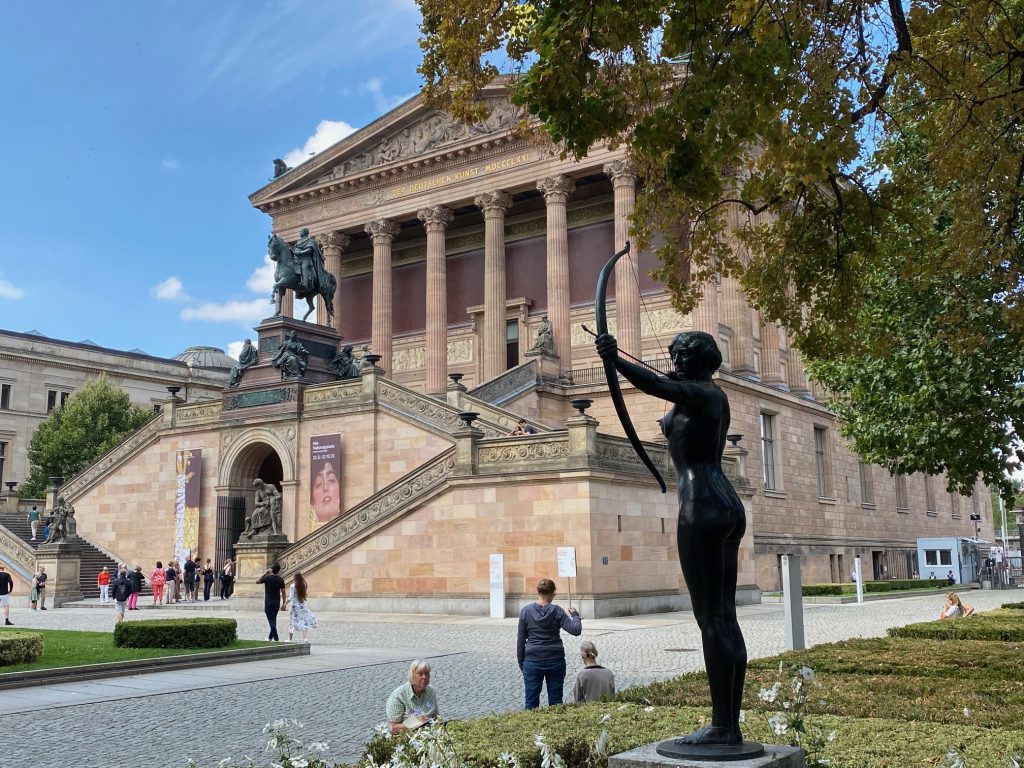
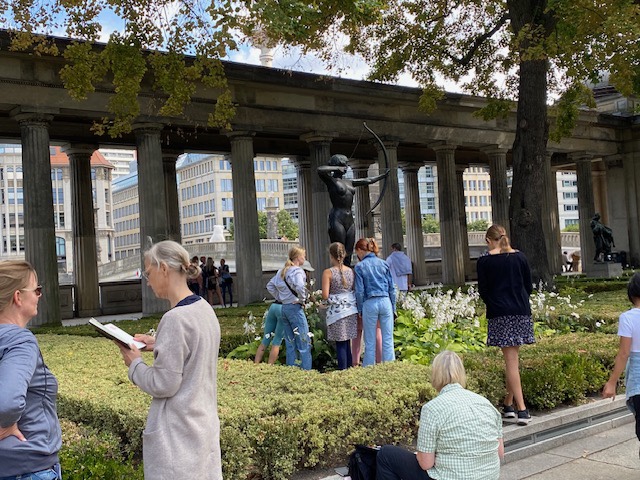
Everyday objects
If you were wondering whether everyday objects can be a piece of art, then the exhibition at the “Neue Nationalgalerie Berlin” is for you. Isa Genzken challenges our traditional view of everyday objects through small transformations of these objects. At first sight you “only” see something utterly familiar to you. A window, a radio, a rose or a wheelchair are immediately recognisable. However, all objects have a little twist to them causing some alienation, questioning or finding new connections. This is the stimulating experience of a visit of the exhibition. The booklet gives an informative overview of choice of sculptures chosen for the exhibition. Walking around in the spacious entry forum allows to appreciate the objects from many angles and in different lighting including twilight. Allow yourself to be challenged. Distancing your perspective beyond the obvious object you recognise broadens our vision of what we see and how we perceive it. The huge pink rose in front of the gallery overshadows even the monumental appearance of the Neue Nationalgalerie. In memoriam “Rosa Luxemburg” and Karl Liebknecht who were murdered not far away, near the “Landwehrkanal” in 1919.
Some visitors might like the skyscraper models she created to remind us that “design catastrophe” with the usual high rising buildings are pervasive around the world. Sculpture as architecture or architecture as sculpture has been her forward looking work from 2008 “Ground Zero – Hospital”.
With the construction work in full swing in the neighbourhood of the gallery with the design of a barn (Scheune) we understand the choice of the artist as a timely reminder that Berlin could be more daring in the architectural design. 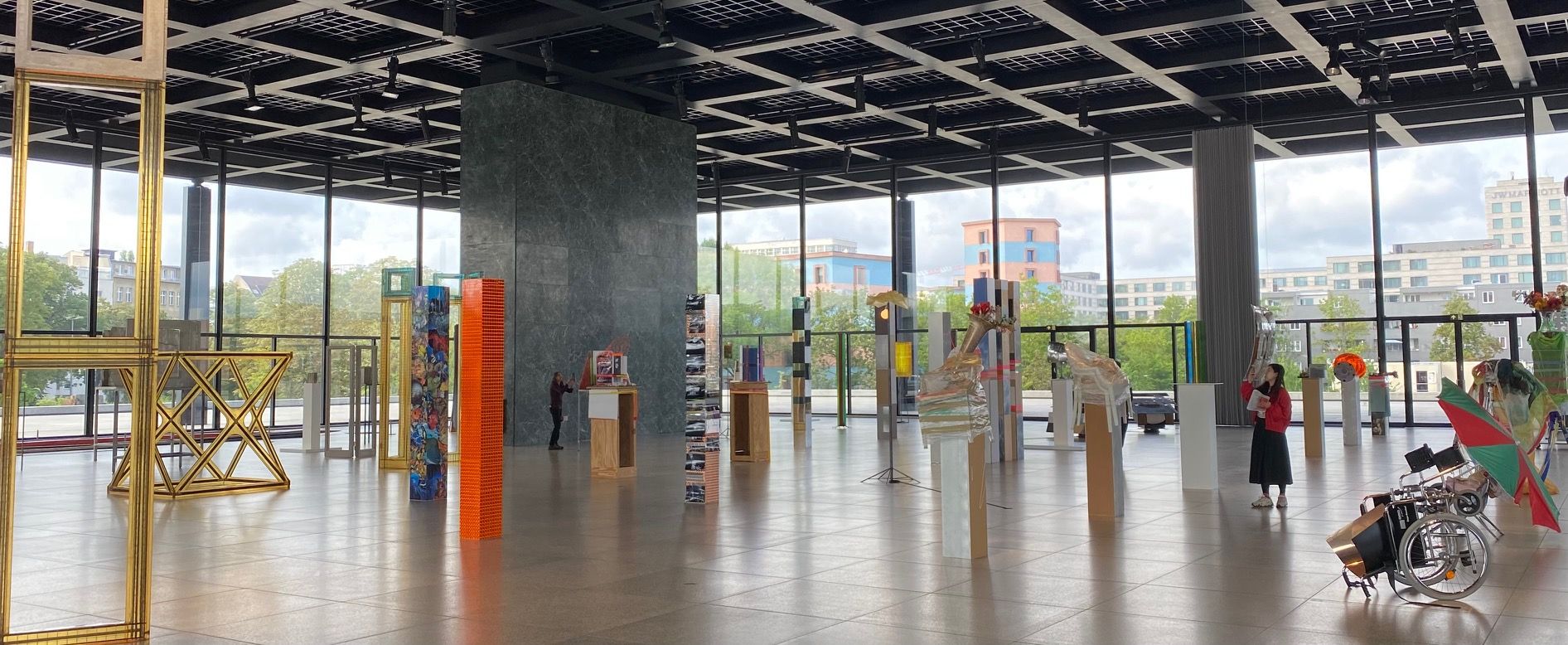
Politicians and Literature
Biographies as well as autobiographies of politicians receive a lot of attention. Even spouses of politicians or artists benefit from this sensational effect (Obama). But beyond these ex-post or after-office effects, it is more interesting to look at what literature or authors have had an impact on the life and, maybe, office of presidents. So-called literary couples or specific relationships between artists or authors can reveal interesting additional information to understand “what made these personalities”.
In “Le Monde” there is a series of articles devoted to such relationships. It is a kind of romantic summer reading satisfying nosy looks into the private lives of politicians and other celebrities of a more intellectual kind. On the 25th of August 2023 it was the turn of the relationship between Francois Mitterrand and Marguerite Duras entitled … “menteurs sublimes, forcément”.
Their long-standing relationship had in common to cover-up some of their failures in the Nazi-occupied France.
Post-war each person had more than just sympathy for the other person’s accomplishments. The interesting feature to accept advice and criticism from the other person is rare for highly exposed persons. Relationships between artists and presidents are somehow tricky for both. As artist you can get instrumentalised by power rather quickly. As politician you run the risk to open-up too much, as they are rarely unobserved. Paparazzi or other agents go a long way to get or make up a good story. “Tell me what you read, and I tell you who you are”. The relationship between literature, politics and politicians will never be easy. It remains good stuff for literature and cinema. 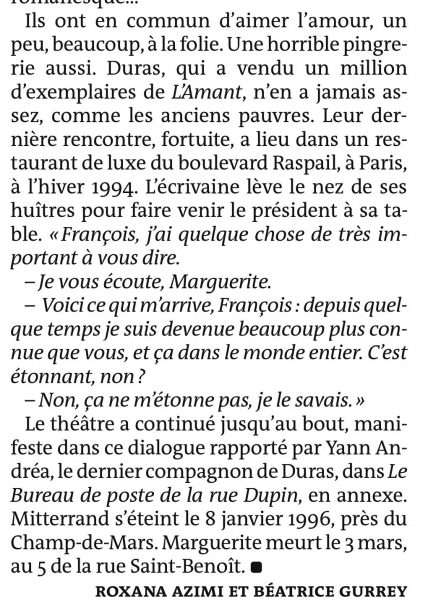
Corbusier ZH
Realizations based on the theory of architecture by Le Corbusier are always worthy of visit. Passing through Zurich (CH) allows to discover another fine example of a villa he designed in the neighborhood of the old town. Within walking distance from the lake Zurich the spacious building allows just like the Paris example for an exhibition of art work within the villa. Horizontally stretched windows and a terrace on the roof make these villas look very modern. Rooftop bars and restaurants just stage a revival in inner cities as cool locations. Le Corbusier anticipated this long ago. Theories can have a long half value time of lasting.
The materials applied in the realizations were obviously less durable. This is the reason why the villa had been closed for renovations for many years. The reopening now shows the splendid views from inside out as well as from the outside. Colors are especially interesting in this example. Nothing is left to or build by chance. The Design language is spelled out in each detail down to door handles. An ongoing exhibition about the deterioration of materials and in some cases even toxic materials helps to understand the necessity to be aware of material science in construction. This makes visits even more informative. The confrontation of vision and sustainability becomes an additional topic also for the theory of architecture.
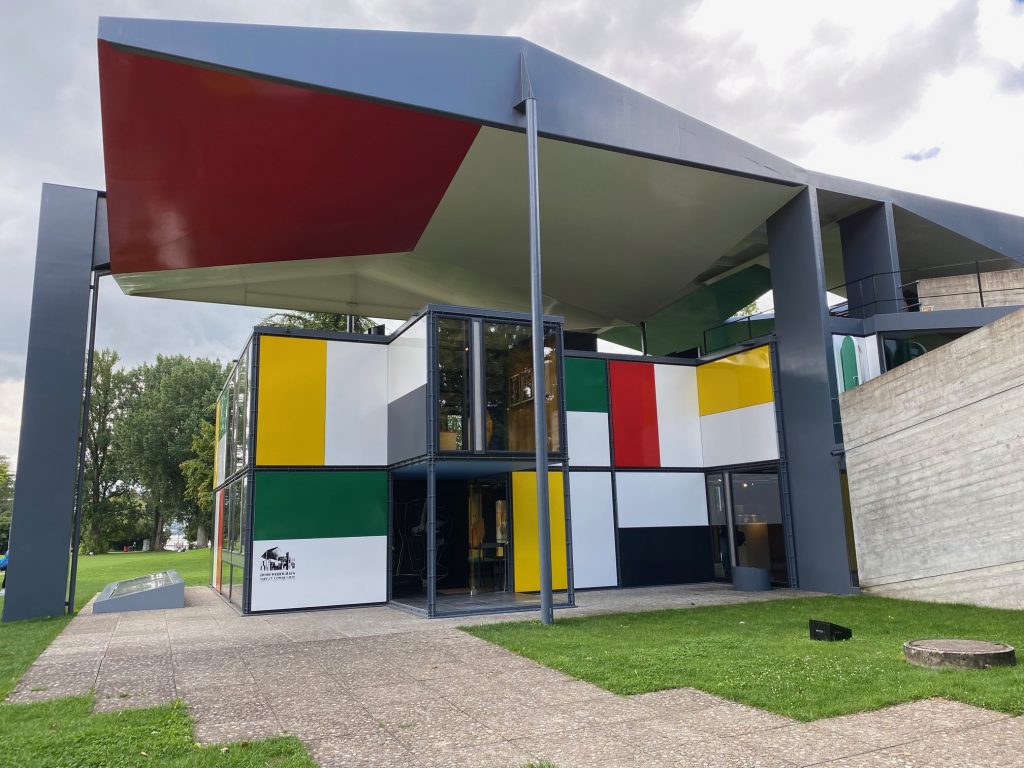
Stilfindung
Kunstschaffende brauchen Jahre, oft auch Jahrzehnte, um ihren eigenen Stil zu finden. Das ist durchaus ein schwieriges Unterfangen. Frühes Ausprobieren verschiedener Kunstrichtungen ist dabei so etwas wie ein Experimentieren mit unterschiedlichen Werkzeugen. Da hilft es enorm, wenn schon einmal ein reichlich bestückter Werkzeugkasten im Elternhaus vorhanden ist. Das war in der Künstlerfamilie der Giacomettis der Fall. Der kleine Alberto hat mit Vater Giovannis Tinten, Federn, Ölfarben und Pinseln früh angefangen, sich auszuprobieren. Eltern, der kleine Bruder, Landschaften, Posen vieler Verwandten und Bekannten sowie jegliche Gegenstände wurden zu Objekten des Skizzierens für den Jugendlichen. Schule war nicht wirklich interessant, selbst die École des beaux arts in Paris erweiterte zwar sein Repertoire an Techniken und Sichtweisen, aber auf dem Weg der Selbstfindung scheint es nur eine Passage gewesen zu sein. Auf dem Weg der Abstraktion hat Paris allerdings die Kreativität stimuliert. Seine Skulpturen von Köpfen der Familie haben sich verallgemeinert, hin zum Universellen. Weit über seine Heimat hinaus sagen die Skulpturen des späteren Albertos uns etwas über Menschheit und Menschheitsgeschichte. Den Weg zu verstehen, den der „L‘homme qui marche“ bis zu seiner Verwirklichung beschritten hat, ist in der Ausstellung im Bündner Kunsthaus nachvollziehbar. Vielleicht mehr ein Lehrstück in Pädagogik und Kunstpädagogik, als in grandiosen Werken der Giacomettis. Welch ein Glück, dass sich Alberto von den Stilrichtungen anderer abgesetzt hat und einfach sein eigenes Ding gemacht hat. Beruf und Berufung können nahe beieinander liegen. Das ist die gute pädagogische Message.
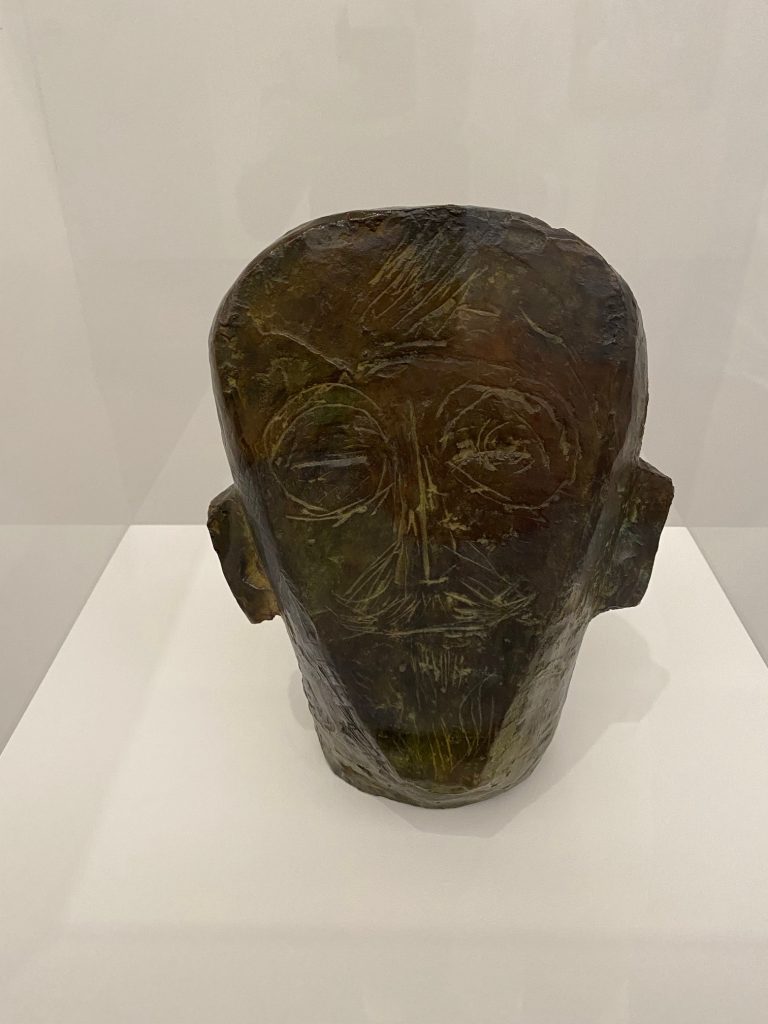
Lotte
Im Forum Würth in Chur lässt sich in 2023 eine erfrischende Ergänzung zu der ebenfalls in Chur zu besuchenden Ausstellung der männlich dominierten Giacometti Familiensammlung erleben. Lotte, die Malerin, hat ein umfangreiches Werk von erlebten Landschaften hinterlassen. Dem Mäzen Würth ist es gelungen, einen bedeutenden Kontrapunkt zu setzen mit seiner Wertschätzung durch den Ankauf einer großen Sammlung. Weg von der bloßen Darstellung von Frauen durch Männer, hin zu Sichtweisen von Frauen. Im Begleittext zur Ausstellung wird treffend von einer Art bildlichem Reisetagebuch gesprochen. Ein Thema das den Kunst und kulturellen Diskurs in Chur seit Jahrzehnten beschäftigt. Aus der Gegenüberstellung zu den Giacometti Werken ergibt sich die Jahrtausende alte Frage des „l’homme qui marche“ und diese war und ist: „quo vadis“. Das ist denn auch der Titel eines im impressionistischen Stil ausgearbeitetes Gemälde von Lotte. Es ist gut in Szene gesetzt, auf violettem Hintergrund. Mäzene können Impulse geben, die dem oft beliebig erscheinenden Kunstmarkt emanzipatorische Anstöße geben. Kostenloser Besuch im Forum für reisende Familien besser als jeder Stopp an der Tankstelle, obwohl wir vor Ort richtig vollgetankt haben, im übertragenen Sinne.
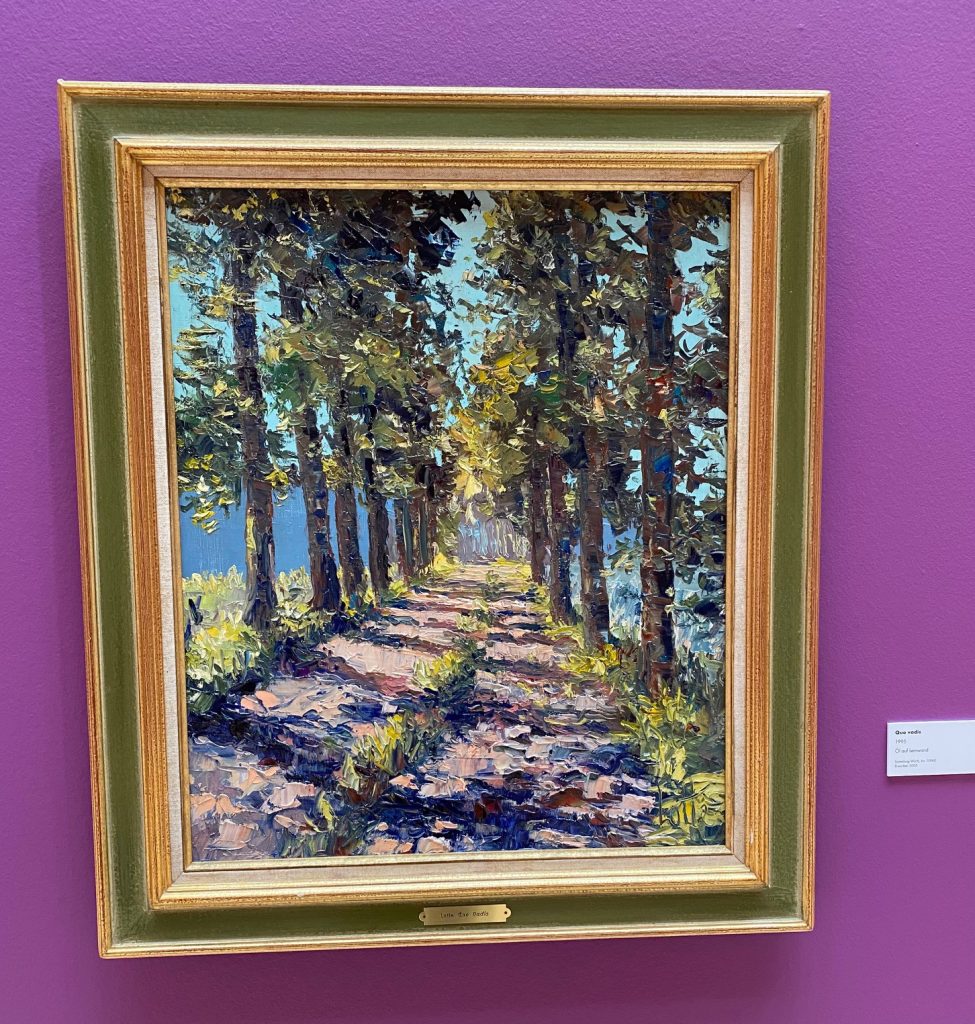
Giacometti
For everyone who enjoys a good walk, with or without dog, Alberto Giacometti is an artist of interest. The world-famous statue “L’homme qui marche” can be admired in several places. Chur (CH) is the artist’s place of death. The most prestigious galleries in Switzerland all have one or several of his art works. In the Bündner Museum in Chur three sculptures of women are perfectly put into correspondence in one exposition room. Eli and Anette from the years 1961 and 1965 talk to Francine with her arms closed in front (title: buste d’une femme). The latter one is from 1962, but was only finished and released as sculpture in 1966, the year of his death or departure. This seems to close a wide circle of creation in the life course of this itinerating artist. Walking the exhibition from sculpture to sculpture is a first step towards meditation walks. Awareness of the stories of the personalities involved widens our horizons. Alberto Giacometti is one of the many artists from the family of the Giacomettis. In the museum in Chur the other family members are well represented, too. Women artists seem to be missing there, probably this needs additional generations.
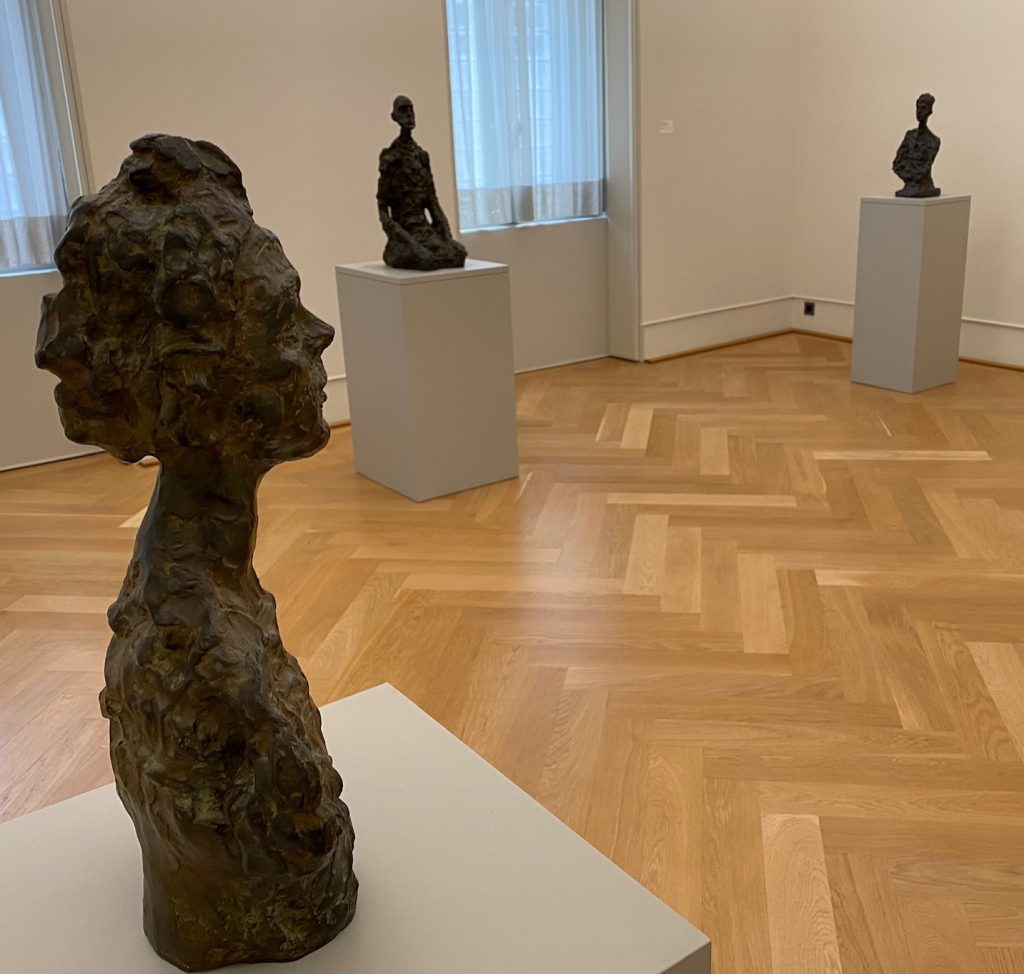
Errance
Das musicorum Festival in Brüssel ist gut für außergewöhnliche Überraschungen. Am 20-7-2023 gab es dort ein Konzert des Trio Errance. Sopranistin Julie Gebhart, Pianistin Nao Momitani und Klarinettist Rudy Mathey hatten ein kurzweiliges Konzert mit dem Titel Ode au voyage zusammengestellt Von Mahlers Auszug aus der 4. Symphonie 4. Satz „wir genießen die himmlischen Freuden“ wanderten wir Schuberts Hirten auf dem Felsen folgend zu den modernen „trois itinérances“ von Claude Ledoux. Von Romantik bis zur Trauerarbeit nach dem Attentat in Brüssel 2016 waren wir auf traumhaften sowie traumatischen Reisen. Dank dem hervorragenden Trio und dem Komponisten in Anwesenheit mit kurzer Einführung haben wir uns nicht auf diesem Weg verloren gefühlt. Emotional gestärkt sind wir auf dem Weg vorangeschritten. Eine wirkliche Feier- und Gedenkstunde.
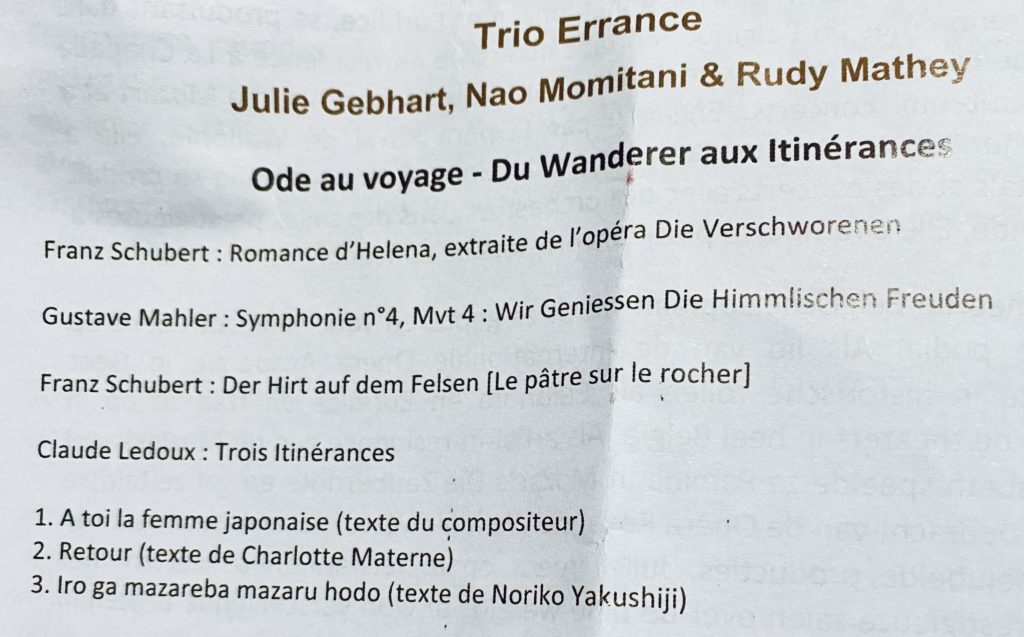
Garten
Ach es ist so schön im Garten. Ein schöner Garten will geplant werden. Das gelingt auf besondere Weise mit dem „Pollinator“. Hinter dem Pollinator verbirgt sich ein Kunstprojekt, das viele kleine Gartenkunstwerke zu einem großen verbinden möchte. Spannend ist nicht nur das Vernetzungsprojekt von vielen einzelnen Parzellen zu einem größer werdenden Gesamtprojekt (Aggregation), sondern der für Kunstschaffende gewohnte Perspektivwechsel. Aus Sicht der Bestäuber der Pflanzen und Blumen gesehen ergibt sich eine vogelähnliche Perspektive auf den Garten.
Der Parcour einer Biene oder eines Schmetterlings durch unsere Gartenparzelle regt zum Träumen an. Vielleicht hätte Franz Kafka nach der Parcour-Erfahrung ein anderes Insekt gewählt. Mir gefällt die 2D, 3D, 4D Perspektive, die es erlaubt, den blühenden Garten im Zeitraffer durch alle Jahreszeiten zu visualisieren. Das ist Gartenarbeit ohne die mühsame Kleinarbeit des Pflanzens und Unkrautjätens. Es wird nicht gleich ein Garten wie von Impressionisten in Argenteuil von Monet oder in Yerres von Caillebotte daraus, aber ein farbenprächtiges Kleinod allemal. Mein erster virtueller Versuch (Link) ist schon recht farbenfroh. Lateinische Namen auffrischen ist schon fast ein Beitrag zum gesunden Altern, besonders wenn der Garten einige Kilometer entfernt ist. Im Sommer lassen sich leicht neue Pläne schmieden. Herbst und Winter, Trockenheit und Hitze lassen uns das Gartenkunstwerk nochmals überdenken. Spielerisch ein Gartendesign gestalten, kann der erste Schritt für mehr Natur sein. Biodiversität macht Spaß und hilft uns allen. Kleinvieh macht eben auch Mist. 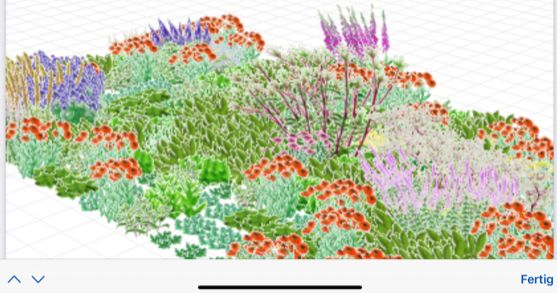
Smurf SDGs
The smurf series of comics has been a world-wide success as children-books. Many adults enjoy re-reading some of their old comic books to their children or grand-children. Now let us try it the other way around. Our children try to sell us the concern for the environment by talking to us through the designs of smurfs, Schlümpfe or Strümpfe, as they are called in various translations. Maybe this way we are more open to take a serious look at the Strategic Development Goals (SDGs) of the UN. Easily accessible and getting us through an emotional connection might work better than tedious lengthy documents and statistics of continuous failure (e.g. on hunger) of most parts of the world.
Tell the story of the smurfs with the SDGs in mind. See how far you get in remembering the whole list of 17 stories. Build a narrative around each of the images. There is no way around getting nearer these goals for our very own survival as a species. Intergenerational communication works both ways from young to old as well as from old to young. Design your own characters, if you like, with the same SDGs in mind. Only this way we shall broaden the supporters for the goals beyond the expert circles of politicians and policy advisers. Happy drafting and rapid implementation! We can do it, if we want to. 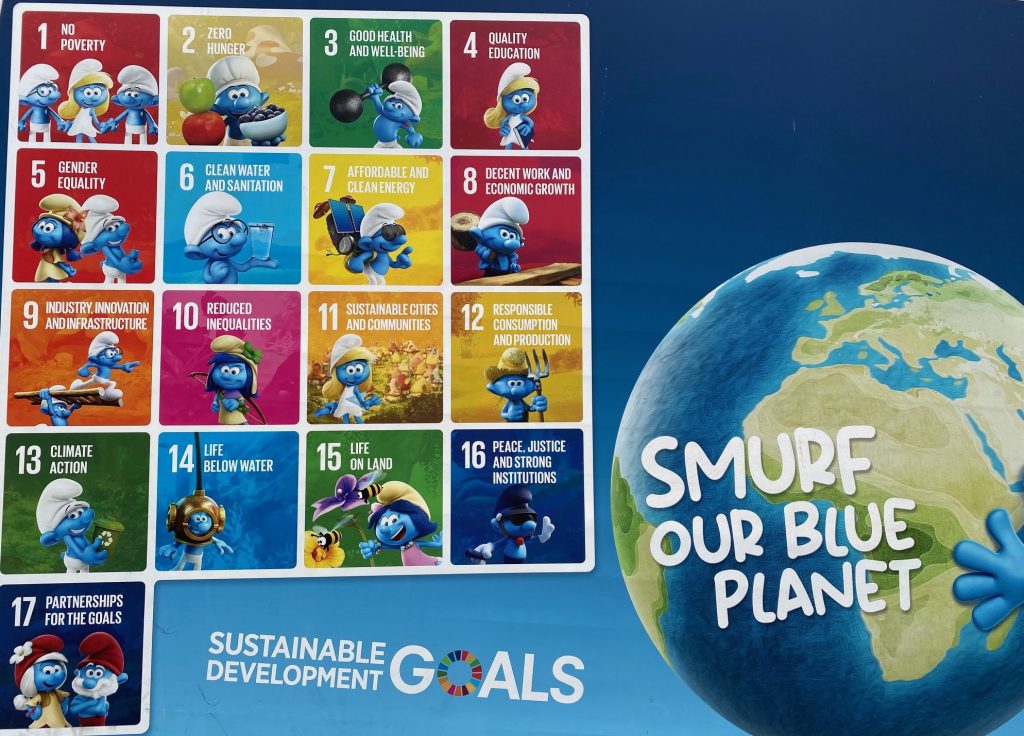
Züge
Wer heutzutage mit dem Zug verreisen möchte braucht starke Nerven. Eine lange im Voraus geplante kostengünstige Reise kann dann schon mal zu unerwarteten Kapriolen führen. Jede Person wird wissen, dass eine Reise zum 14.Juli nach Paris ein besonderer Anlass ist. Normalerweise wird Revolution gemütlich gefeiert und nicht Revolution gemacht. Die Befürchtung ist jedoch im Juli 2023 könnte das anders sein. Die Gewalt an Jugendlichen und in der Folge von Jugendlichen war schließlich erst vor einigen Tagen mehrfach eskaliert. SozialwissenschaftlicherInnen führen dabei nebenbei Feldstudien durch.
Aber eigentlich war die Reise mit dem Zug schon Monate vorher geplant. Jetzt kommt es anders. Die THALYS Gesellschaft hat in ihrer App allerdings eine Gebühr für das Umbuchen fest verankert, selbst wenn es eine erzwungene Umbuchung ist. Also rein ins Geschäft, Wartenummer ziehen und Warten, Warten und nochmals, na was schon, Warten.
Zum Zeitvertreib wird ein Geschichtendrucker bereitgestellt. Ouf, Kurzgeschichten und Comics. Das macht Hoffnung beim, na was schon, Warten. Aber irgendwann fahren wir dann ganz schnell mit dem Hochgeschwindigkeitszug nach Paris. Aber da wir doch bitte 30 Minuten vorher auf dem Bahnsteig sein sollten, wissen wir schon, wir werden, na was schon, Warten. Mein Mantra bleibt: Mit der Bimmelbahn mag ich gerne fahren, die fährt langsam und kommt trotzdem an.
Flotow Aus
Irgendwann, so denkt man, sollte der Ruf einiger Komponierenden enden oder zumindest verblassen. Überraschend war das Auffinden auf der Musikplattform Spotify einer populären Sammlung von Liedern bei denen die letzte Rose von von Flotow zu hören ist. Ein Bayer oder Österreicher hätte vielleicht gerufen: Ja AUS is! Nix AUS ist es. Ein australisches Orchester (aus Adelaide) und Greta Bradman haben in 2018 auf der anderen Seite der Erdkugel, Flotow mit seiner „irischen“ Arie ins Programm genommen neben anderen Ohrwürmern. Die Romantik lebt. Einige Melodien finden weiterhin ihr Publikum. Erstaunlich, nach 150+ Jahren und 6000km Entfernung. Flotows Opernarien aus Stradella begeistern auch hin und wieder die Fangemeinden der Startenöre.
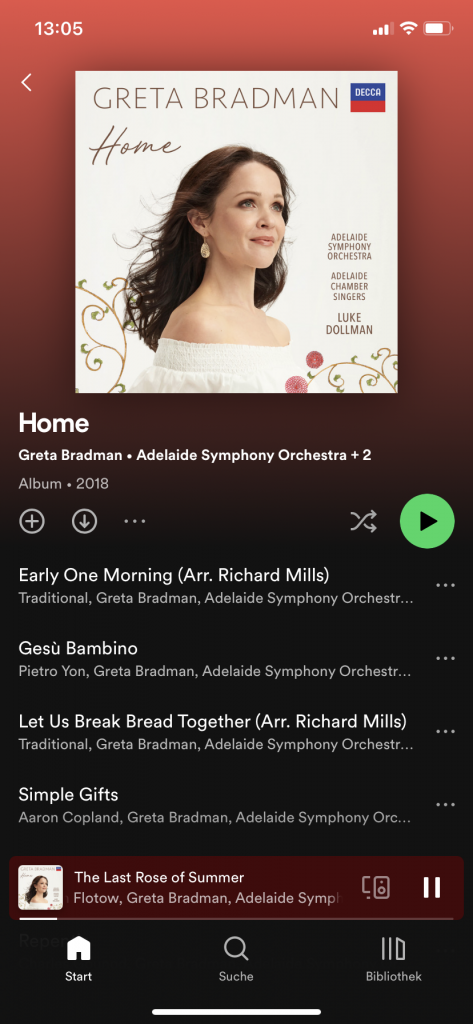
Collective Violence 2
Summers and Markusen (1999) subsume state terrorism under the broader heading of collective violence. Even beyond non-governmental groups, states might apply collective violence against innocent people. Among the strategies governments use as a form of collective violence fall (1) arbitrary arrests, (2) imprisonment without trial, (3) torture and (4)a summary execution of members of alleged enemy groups. Particular outcries are caused by, for example, police or other para-military groupings of persons who jump from (1) to an execution of an innocent person or of several even seemingly unrelated murdered persons (4b).
Amnesty International attempts for decades to fight against such occurrences on an almost global scale. The need to complement the national legal systems through supra-national instances as well as NGOs in this domain is obvious. Even the most advanced democracies need to permanently check their systems for several forms of state terrorism or abuses of power to eliminate or intimidate opposition.
Staub (1999, pp.195) undertook an attempt to list elements that allow to predict and maybe prevent collective violence. The theory starts with “conditions of life” more generally like economic, social and political conflicts as well as rapid social change. Activation of basic needs in people, like several forms of security, challenges to a person’s self-concept, traditional values, simply the customary way of life (COVID-19) or new comprehension of (climate) realities, they all challenge old world views of people (superiority) and their place in the world (AI).
Claims for support by other people (government), missing connection to others (individualism) lead people to focus more on their own needs and isolated action. Rebellion as collective violence is directed against differences in status, power and (social) rights. Self-interest is becoming an overriding societal principle. Racism (p.200) and police violence (p.201) are part of Staub’s theoretical considerations. He argues in favour of training of situations in which a police officer is likely to become unnecessarily violent or to stop it if it occurs. At least a medium-term solution.
Framing of such training as preparation of good teamwork rather than betrayal is crucial in action teams, be they in the police or the military. The reader on “violence subie, violence agie” by Seron and Denis (2000) allows us to take a step back and reflect on the spirals and repercussions involved in violence from the perspective of the person who carries out an act of violence and the victim. A social-therapeutic approach aiming at reconciliation is worth trying, albeit a lot of obstacles. Collective dance rather than collective violence is the immediate as well as long-term solution (More on dance here). 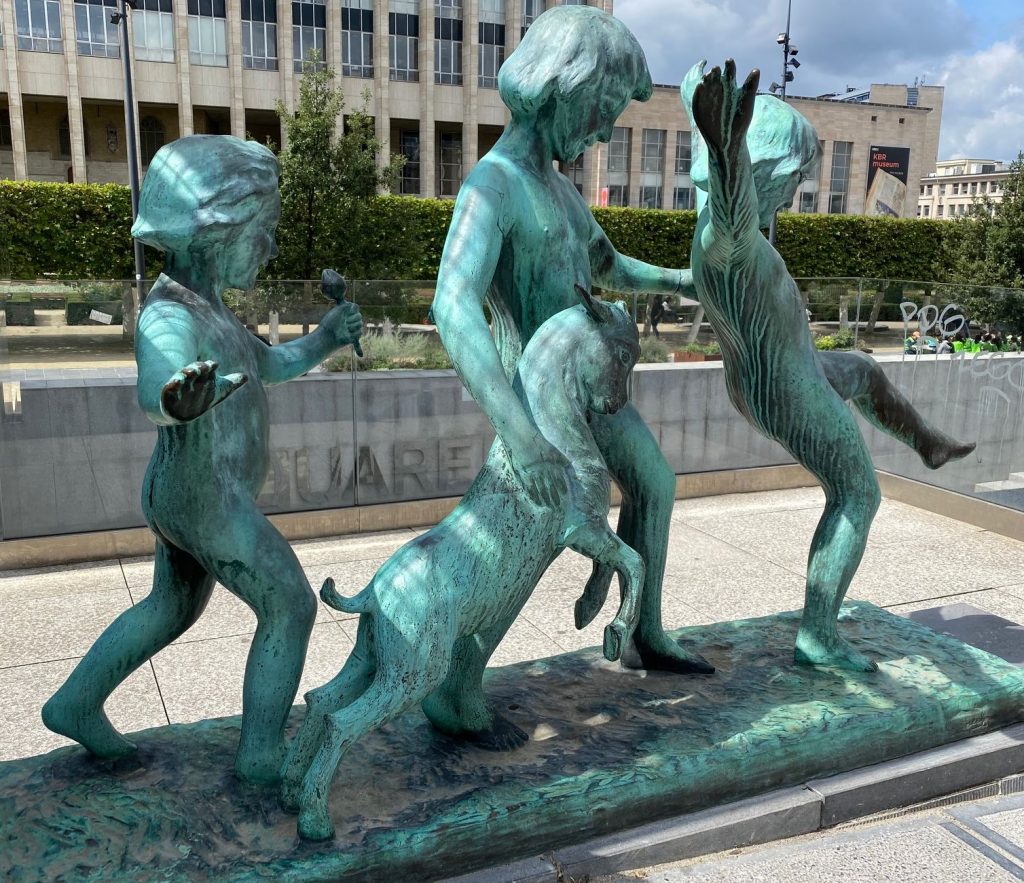
Virtual Sociology
Abstracting from the real world, the world we live in today or we lived in some time ago, is either speculation or maybe contribute to theory building. Virtual sociology has this potential. Exploring virtual worlds as in Virtual Reality (VR) or Augmented Reality (AR) allows us to take on new roles or experience a wider range of social interactions. This could be the strength of a new field of Virtual Sociology.
In the project in the Jewish Museum in Berlin the composition of a composer murdered by the Nazis in Germany was revived and played in the virtual setting of today’s concert halls. The novel by Kazuo Ishiguro “Klara and the Sun” explores the interaction of a child with her robot friend, when the AI becomes and/or replaces a friend. Virtual creations allow to explore and test more degrees of freedom of social interaction. 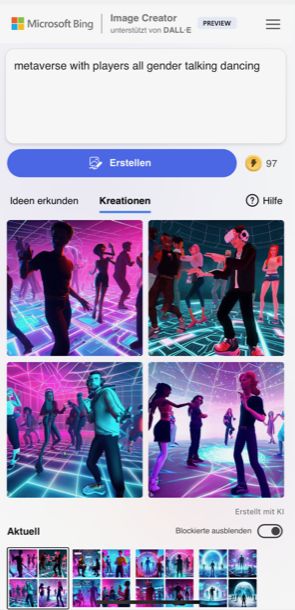 Experimentation of new social spaces and different forms of interaction need to be explored. It allows a new form of sociology, maybe similar to the 1960s and 70s social revolutions we studied for years to come. Virtual sociology is not a sociology while being on drugs, however interesting this might be for some.
Experimentation of new social spaces and different forms of interaction need to be explored. It allows a new form of sociology, maybe similar to the 1960s and 70s social revolutions we studied for years to come. Virtual sociology is not a sociology while being on drugs, however interesting this might be for some.
Virtual sociology takes sociology into the virtual world and investigates the new social relationships with avatars or care robots. In programming different social roles (managers, employees) we create new forms of interaction and have an observer within the social world. We may eventually test the Weberian claim of a value-free scientific method of the social sciences. This will inform our need to “supervise” or to guide algorithms that are claimed to do “value-free” execution of rules.
In fact, they don’t. They just reproduce the value system that is installed into them by a “careless” programme (song youtube). The social in virtual worlds is opportunity just as much as risk, but we have to analyse it systematically. As our technological and social environment changes, we have to adapt topics and methods to make meaningful scientific analyses as well.
Sociology of the Virtual
Some programmers and artists would have been a great sociologists. As many social sciences embark on their experimental reorientation, many artists and programmers design and experiment already with new forms of social interaction. It is not only that sociology leaves the classroom, research labs or policy advice. Sociology is taken into museums and exhibitions. Learning about society through the lens of artists nicely complements the more boring form of teaching in the classroom. What is normal practice for art historians could benefit learning about sociology as well.
Virtual worlds of games and particularly so-called serious games take people into virtual worlds to learn, practice or exercise new forms of social interaction. This is indeed an additional form of experiments that can enrich our social practices. Medical applications start to spread to train persons to overcome phobia of all sorts.
In usual games we tend to defend the hypothesis that persons can uphold the differentiation of playing with arms in the virtual world and the real world. In medical or social games, we defend the hypothesis that it is easy, normal or natural to apply the learning in virtual constellations to the real-world-experience.
From a scientific perspective it is difficult to defend that a mechanism works in one direction and the opposite as well. Racing cars in inner cities seems to show that certainly not all of youth is able to make that distinction between virtual and real-world dangers for example. Alternatively, the mechanism at work might be that the virtual experiences lower thresholds of inhibition to take risks, to kill or to be exposed to spiders.
These examples are a starting point for a sociology of virtual experiences. Who gets locked into virtual worlds? Are virtual worlds an escape room or a realization of virtual freedom which is restrained in real life. Authoritarian regimes might lead more people to emigrate into virtual, free worlds. The inner-exile has been a refuge for many artists in the past. A lot we shall need to hypothesise and explore with empirical data. Dance with a virtual stranger might be the beginning of a new experience and virtual interactions. (Image: Wiels, Shezad Dawood, Night in the Garden of Love 2023-6, Game car race).
Ukraine Diary
The gallery curated by Dr. Justyna Napiórkowsak in Brussels has another ongoing exhibition with art work from Ukrainian artists. As before in the exhibitions on the war of Russia in Ukraine, they put a major emphasis on the independence and resilience of Ukrainian art despite the ongoing war. To keep a diary of atrocities, but also survival and resistance to violence by Ukrainians, is a great effort. It stems primarily from artists that struggle to find adequate material to keep working or not to succumb to the participation in active war or military defence efforts. Using soft colours, water colours, has a rather symbolic meaning, after the inundation caused by the explosion of the huge water reservoir on Ukraine’s territory. Producing art in form of a diary, like reporting daily to yourself and the outside world as well as later born persons, has an important historic function, too.
No less than the “Diaries of Anne Franck” comes to our mind when thinking about a diary during war time. Russia’s attempt to eradicate Ukrainian culture is bound to fail. We shall cherish the Ukrainian diaries from the war time now and later. Thanks for reminding us of this collector’s duty to support the artists, writers and people of Ukraine. 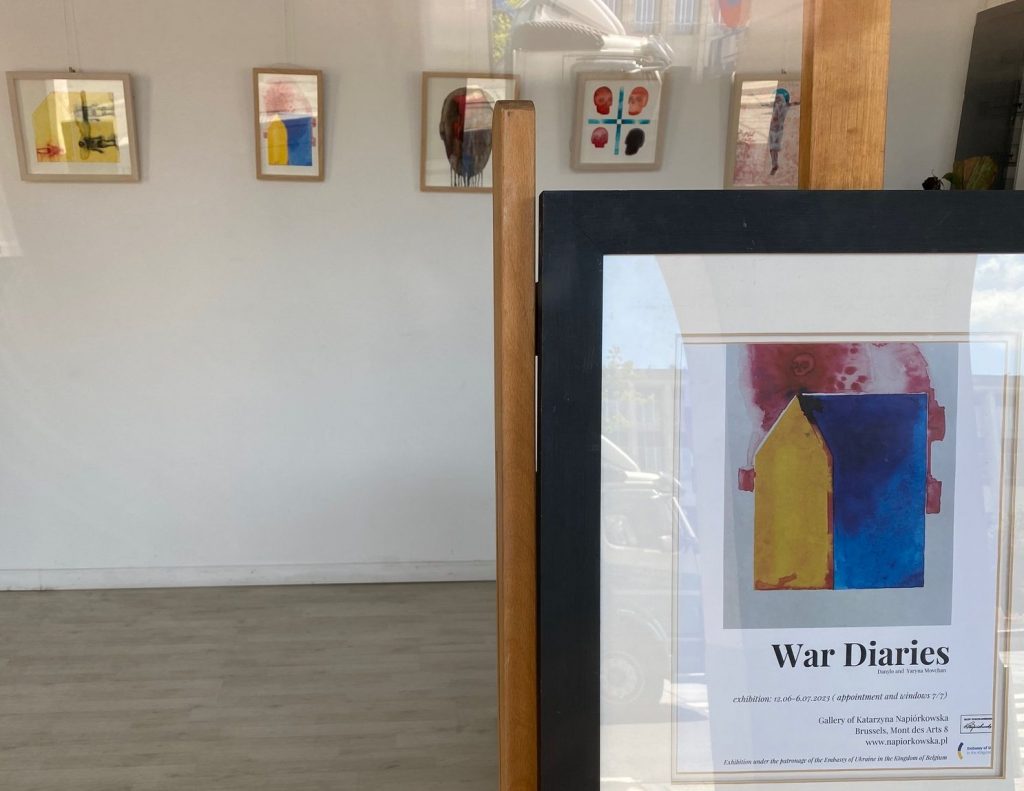
Avers
Der kurze Titel „Avers“ der Sammlung von Novellen des Autors J.M.G.Le Clézio lässt keine Wundergeschichten erwarten. Der kleingedruckte Untertitel „Des nouvelles des indésiables“ noch weniger. Dennoch, aus der Sammlung von Kurzgeschichten werden die kleinen Heldinnen und Helden des Überlebens in unserer komplexen Welt vorgestellt. Mal mit, oft ohne „Happy End“ werden Kinderschicksale erzählt, die uns nachhaltig berühren. Schule ist für die kleinen Helden ein Fremdwort. Der tägliche Überlebenskampf für Nahrung, Gefahr von Kinderarbeit, einfach in Ruhe gelassen werden oder dem Krieg zu entkommen, steht im Vordergrund. Fluchtwege wäre für mich ein möglicher Titel einer deutschen Übersetzung. Flucht vor Missbrauch und die Brutalität des Alltags in Kriegsgebieten sollten uns sensibilisieren für „la Misère du Monde“.
Die unerwünschten Novellen von Le Clézio kommen auf leisen Sohlen oder eher barfuß daher. Sie lassen uns die ständige Herausforderung der Humanität spüren. Menschen, Kindern, Menschenwürde ermöglichen, ist nach wie vor eine riesige Aufgabe. Der Ansatz an konkreten Schicksalen aufzuzeigen, wie wenig es oft braucht, damit Kinder eine faire Chance bekommen, muss uns aufhorchen lassen. Obdachlose werden bei Le Clézio zu „fantômes dans la rue“. Wir ignorieren ihre Präsenz allzu gerne.
Nach 60 Jahren Heinrich Böll „Ansichten eines Clowns“ rütteln uns die Novellen von Le Clézio wieder wach. Wirkliche Humanität braucht uns alle und das ständig, nicht nur sonntags. Aversionen ablegen und sich dem Unerwünschten zuwenden, das fordert den ganzen Menschen. Überforderung gilt nicht als Gegenargument. Wir sind viele, helfen wir. (Image: Extrait, Atelier Albrecht Dürer um 1500).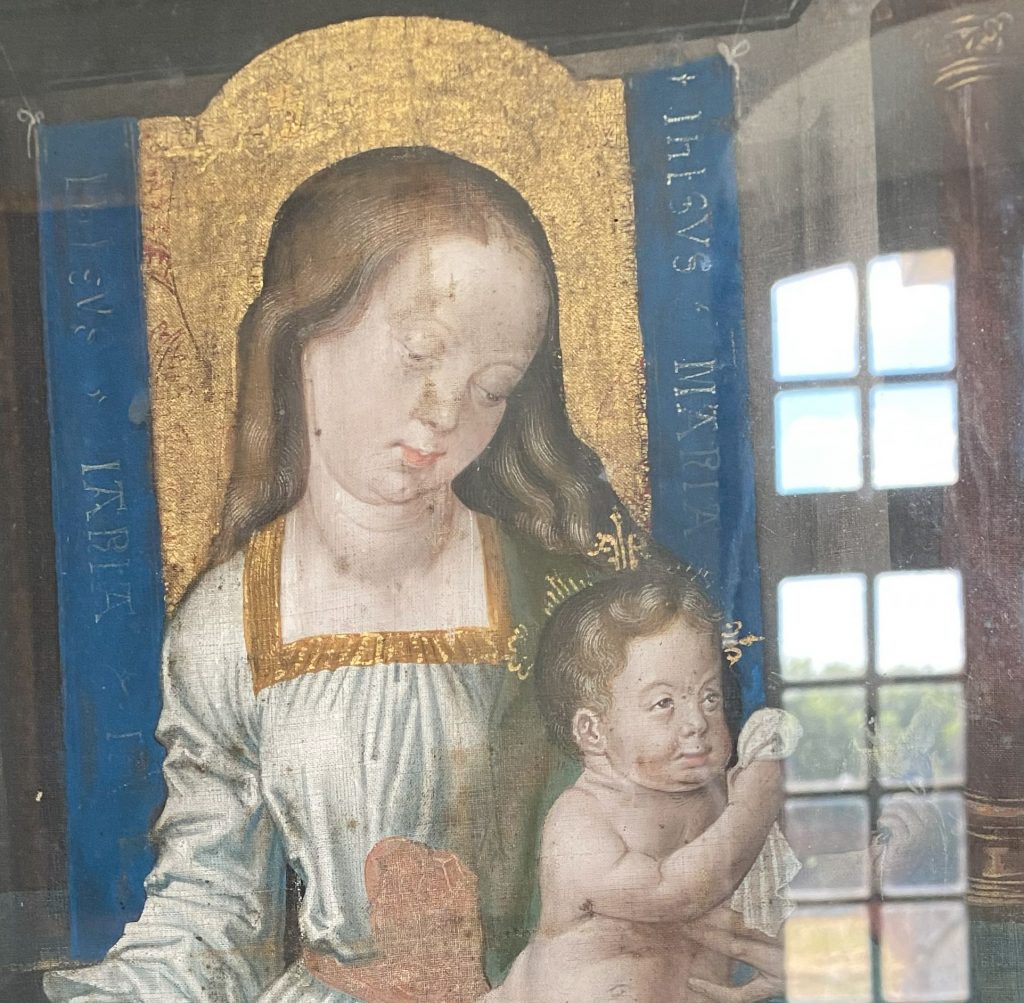
Black White
Working at the Bibliothèque nationale de France (BnF.fr), just like visiting, allows you to benefit from the many temporary exhibitions based primarily on their own collections and donations to the BnF. For those who like “dessins, estampes, photographies”, there is a small exhibition as of June 2023 which features on these three techniques in the work of a single artist Edgar Degas from the impressionist movement. Walking through the exhibition or slowly scrolling the press documentation allows you to follow the artistic life course of Edgar Degas. He started with the pencil dessin and evolved to the printing of a single or sequences of “estampes” (up to 20) to impress us beyond black and white with multiples of 50 shades of grey. Degas seems like continuously searching for the uniqueness of the moment to present strong emotions or to summarise interpersonal relationships immersed in a specific spatial setting. Having demonstrated the richness of dessins and estampes as artistic, but a bit laborious technique, he devotes his last few years to a more intensive work taking photographs and proceeding to their development or tirage as printed versions. No matter which technique he applies, he has a special artistic view that allows to capture emotions and immortalise them. The painter’s eye, as well as later on in his artistic career the photographer’s eye, keep scrutinising himself in various forms of “auto-portraits”. Beyond youth, the pervasive obsession with selfies nowadays had its artistic precursor Edgar Degas for example. Whereas most photographers would classify a double exposure as a “raté”, Degas experimented with this almost like a cubist, Picasso-like techniques in photography. Actually, the last few images in the exhibition show the artistic reference Picasso made in his work to images, impressions and techniques that inspired him throughout his artistic work. There are amazing links in and across the history of art or arts. (BnF expo Edgar Degas 2023). 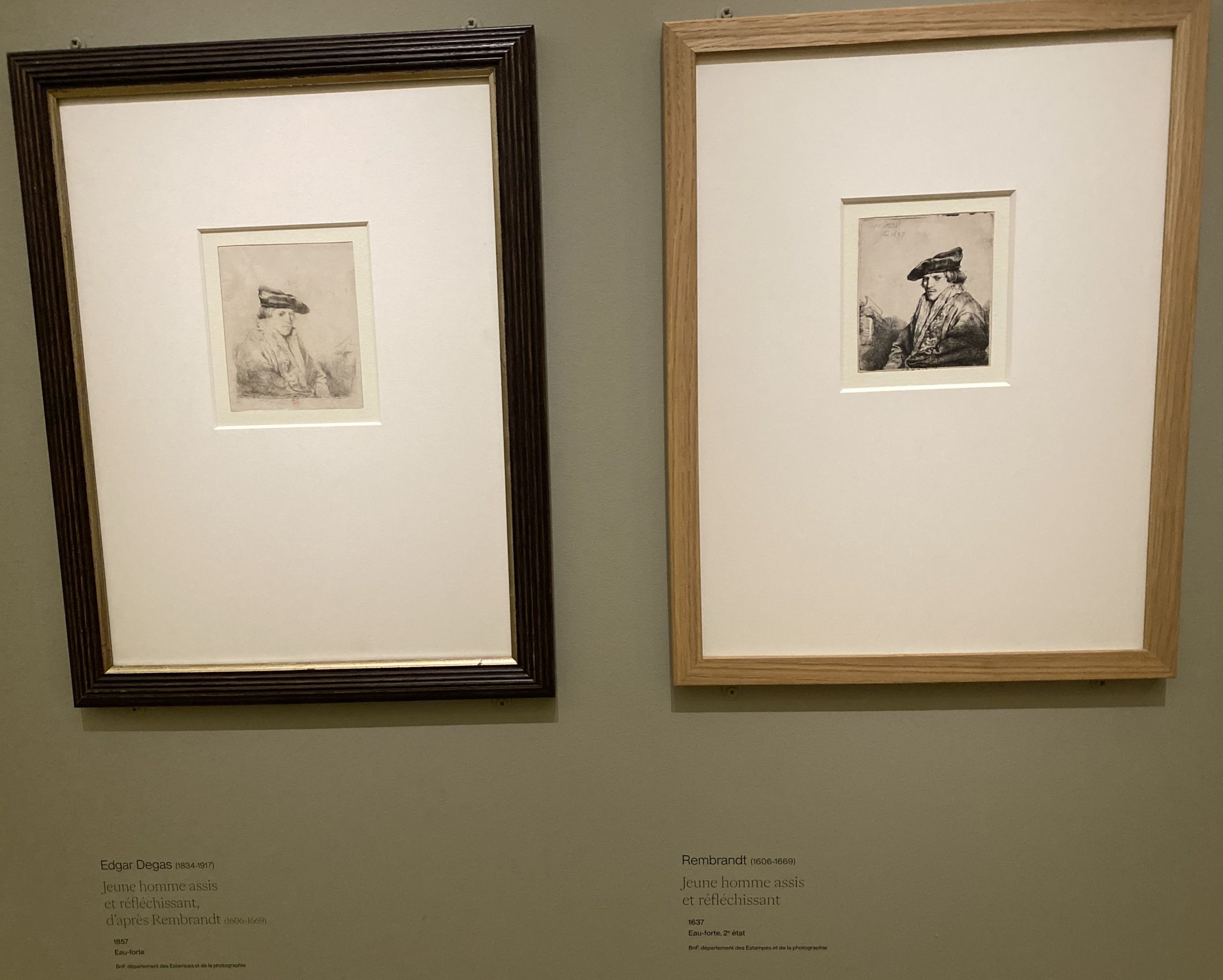
Jury
The are many forms of a jury. In many judicial processes a jury accompanies judges or the president of a jury in the preparing and voting on the verdict. In sports competitions or arts contests it is also common practice to have a jury of several persons to assist in the decision-making process. In academia we are also used to sit on juries to award Ph.Ds or academic positions or fundings. From famous film festivals (Cannes or Berlin) we know the tricky part to select jury members and supervise the proceedings of the jury to follow the official rules of how to accord prices according to a set of predefined rules. The basic proceedings are very similar irrespective of field of application, academia, film, music. Decision-making of the jury is usually based on some voting procedures, attribution of scores and summarising across jury members (to avoid or minimize the effect of corruption for example). Of course, there is a scientific literature on fallacies to avoid for juries themselves or in the selection of jury members.
The Concours Reine Elisabeth in Brussels 2023 has large jury. This year the enlarged diversity of the jury included the amazing lyric soprano Sumi Jo. The slightly more diverse jury (compared to 2018 song competition) might have contributed to the impressive participation of Asian singers in 2023. In competitions the quality of the jury has already a role in the number of international submissions you are likely to receive. Signalling diversity in the jury, therefore, is an important element of diversity of participants and probably intensifies competition through a broader reach. The winner of 2023 Baryton singer Taehan Kim performs a repertoire of Lieder and Arias in at least double the required 2 (European) languages. The impressive performances in the Demi-final with piano accompaniment and then the Final with the full Orchestra were cheered by the jury (in points) and the audiences as well. The repertoire of Taehan Kim ranges from Beethoven, Donizetti, Poulenc, Schubert, Verdi, Tschaikovsky to Schoenberg in the semi-final and from Wagner, Mahler, Korngold to Verdi in the final performance. Born in 2020, he certainly has a steep career in front of him, in addition to a potentially genetical predisposition as researchers just published in Science Advances 2023.
Praise goes to the accompanying pianist, the orchestra and the jury as well, which has encouraged diversity in applications and throughout the competition. An important training in cross-cultural competence for all performers involved. Rather than having a contest behind a curtain, for performers and/or the jury, the whole competition is an excellent piece of daring far reaching transparency of a jury’s work. Everybody online can still listen to the competition performances and judge (or train judgement) for themselves, because “the jury is still out”. 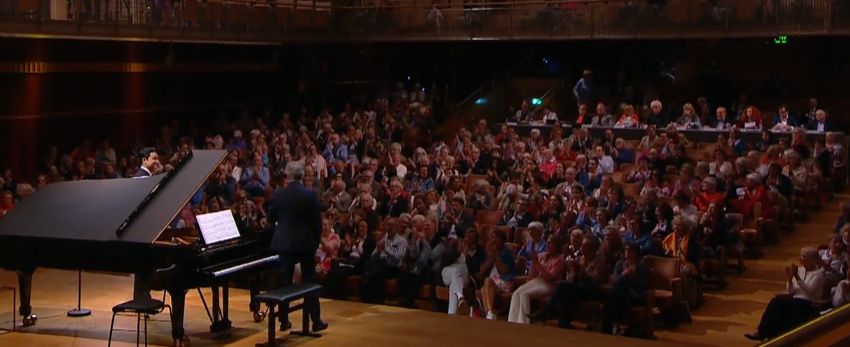
Design Start-up
Es war wieder Designmesse. Klein, aber fein, in Berlin in den KantGaragen. Die Location weckt schon Hoffnung auf Experimentelles, Garagenhaftes, Handwerkliches. Das bringt Abwechslung in die sonstige, glitzernde Shoppingwelt. Das renovierte und entgiftete Parkhaus erlaubt einen Rundgang über mehrere Etagen, vorbei an Galerien und Ständen von DesignerInnen. Es macht sich eine anregende Brise von erfrischenden Ideen breit. Von Design im Raum mit Leuchten und Möbeln über Design von Mode und Schmuck lässt sich viel Schickes finden. Blickfang, samt Blickfang Akademie haben es geschafft, die Mini-messe in den KantGaragen zu etablieren. Es kann sogar Eintritt verlangt werden. Eine weitere Begleitung der Neuen auf dem Markt wird oft nötig sein, denn selbst gute Innovationen sind meistens keine Selbstläufer. Konkurrenz belebt nicht nur das Geschäft, es bleibt meist auch ein Verdrängungsprozess.
Die großen, vielfach schließenden Kaufhäuser in den Innenstädten spüren besonders die Konkurrenz der individualisierenden DesignerInnen mit ihren einzigartig anmutenden Realisationen. Singuläre Kauferlebnisse auf solchen Messen, in stilvollem Ambiente, selbst in einem alten Parkhaus sind, allem Anschein nach, ein Erfolgsrezept. Start-up statt Close-down schafft viele erfüllende Arbeitsplätze. Gute Arbeit wird nicht aussterben, sondern durchstarten. 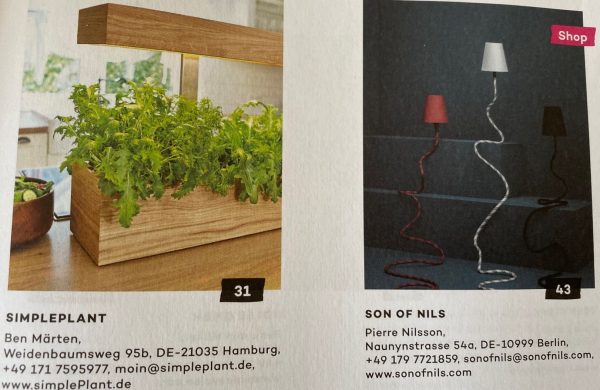
Indigo Waves
„Indigo“ is an almost mystical colour. Its deep blue nature refers to profoundness and in combination with oceans to a surprisingly still largely unexplored world of biodiversity. Additionally, in association with endlessly forthcoming and retreating waves, indigo reveals its many possible shades. Oceans separate or link continents and it is this feature of Oceans which is explored in the exposition “Indigo Waves and Other Stories” (Gropiusbau). Beyond our all to common focus on the transatlantic relationships, “Indigo Waves” explores the links between the African and Asian continents. Embarking on a new narrative for the Afrasian Sea, i.e. the Indian Ocean, we are taken to new horizons through the continuous challenge to our value systems, comprehension of art, poetry or culture more generally. The exposition, through multiple challenges, succeeds in displacing us into the context of other perspectives. Following Oscar Murillo, imagine to view the water roses from Claude Monet (Les Nymphéas) from below the surface. What do you expect? In Europe? Near a barrier reef in the Indian Ocean? Beauty is often not visible at first sight, yet it is co-determined by the currents that build and potentially destroy it (compare photo from exhibition below). The balance of social ecosystems is easily messed-up just like the beauty of ecosystems in nature. “Indigo Waves and other stories” tells us other versions of the colonial stories most of our history books told us for centuries. It is an eye-opening exposition, but probably not the way we expect. Following a poem towards the end of the exhibition by Tishani Doshi “Do not go out in the storm”, we are drawn into the ambiguity of our existence irrespective of the continent of origin. Jack Beng-Thi preserves a poem from Jean Joseph Rabearivelo in his artistic book creation and installation to bring to light “indigo waves”. “vos yeux clignotent dans l’azur, et je les appelle : étoiles. ” (Translated suggestion: “your eyes blink in the blue sky, and I call them: stars). 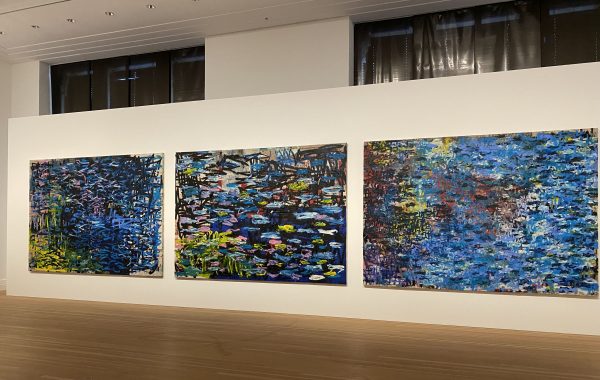
Archer
The Archer is a recurrent topic in art. We find lots of examples around in Berlin just as in front of the National Gallery. Historical references are manifold, too. The exhibition in the Martin-Gropius-Bau with works by Daniel Boyd adds temporarily 3 paintings. But wait, beyond this shared anthropological phenomenon across continents, this exhibition challenges our western, imperialist perspective on human existence.
Please take of your shoes, at first entry into the museum entry hall. Unsettling for most of us, we are continuously confronted with our narrow perspectives on perceptions. Poetics, philosophies, perceptions and cultures are all to easily classified and devalued.
This exhibition achieves to surpass our traditional western concept and empathy for land, room, light, air and water. Eurocentric narratives still dominate the world of art and art history. Daniel Boyd manages to unsettle this through his relentless effort to differentiate from this narrow perspective. Aiming for a difficult to accomplish solidarity across resistance movements, he highlights the common injustice “First Nation People” had to go through. These original inhabitants of continents claim their right to own languages, customs and spiritual or spatial perception. It remains a challenge to start to like the notion of opacity (Éduard Glissant) rather than our western aim for transparency, associated with the enlightenment philosophical tradition. The archers in Boyd’s work aim into the, maybe opaque water, maybe clouds, maybe into the twilight. It sometimes seems more like a ritual than a weapon. Family histories find their way into his works based on photographs of grandparents. The images are different from our conventional depictions of First Nation people, just to highlight the limitations of our western photographer’s eye and mind. 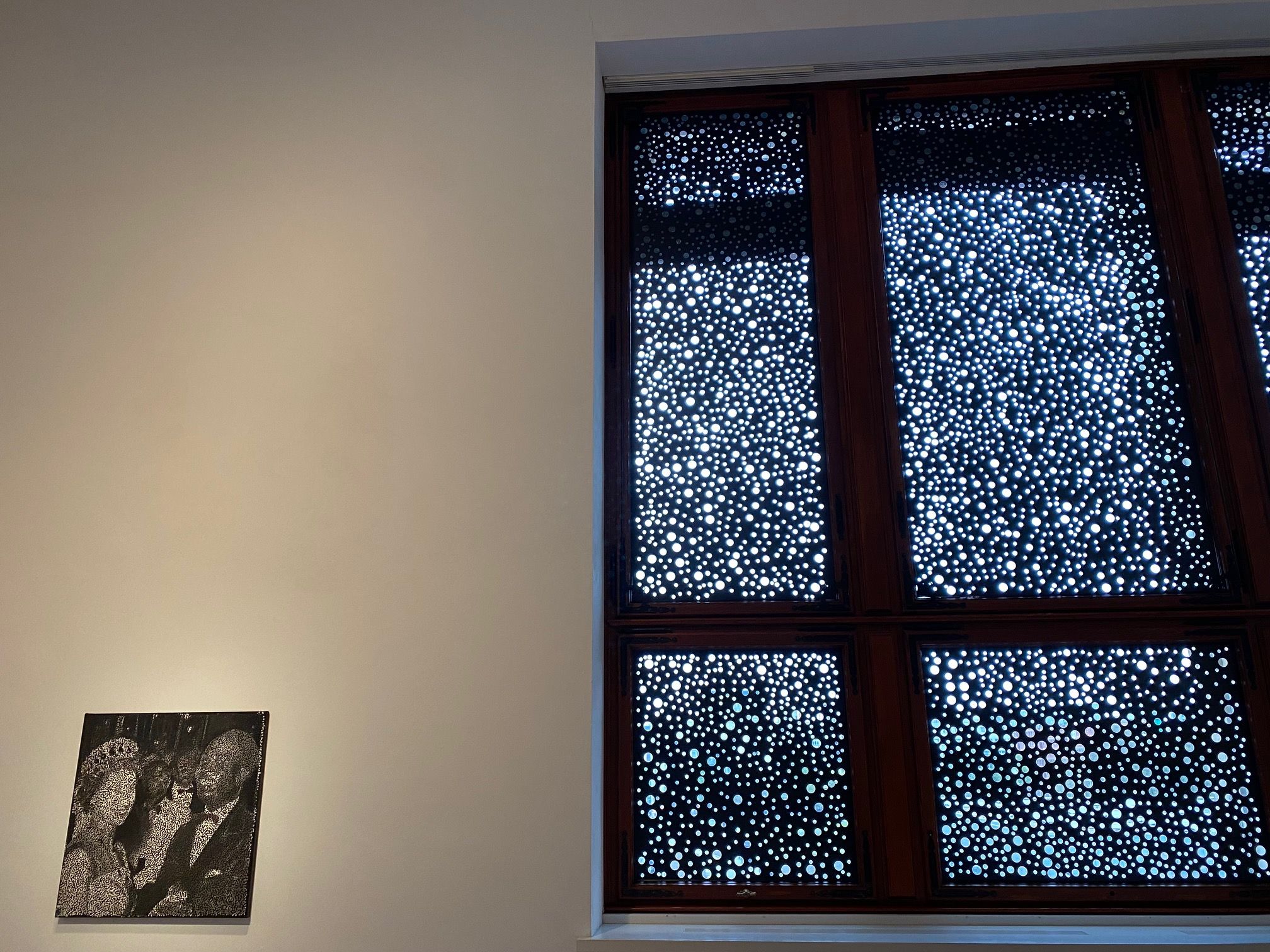
Doppelt-gemoppelt
… hält besser. So erging es mir, wie den anderen Zuschauenden im Berliner Konzerthaus bei 2 x hören. Eine kleine Fangemeinde hatte sich wieder eingefunden, um zeitgenössischer Musik zu lauschen und sich zwischendurch Erläuterungen anzuhören. Welch eine tolle Gelegenheit, denn neben dem Gespräch mit den beiden Musikerinnen Franziska Pietsch (Violine) und Maki Hayashida (Klavier) war die Komponistin Tatjana Komarova anwesend. Christian Jost moderierte das Gespräch über die Komposition und Interpretation bevor das gleiche Werk „Umhüllt von Licht und Nebel“ erneut zu hören und sehen war. Das kammermusikalische Stück in 4 Sätzen lebt von seiner unaufgeregten Dynamik und dem Wechsel der beiden jeweils tonangebenden Solistinnen. Allein, aber gemeinsam; ruhig, dennoch dynamisch. Dieses Sich-aufeinander-beziehen und gleichsam wieder nahezu meditativ auf sich selbst zurückgezogen komponierte Werk hat einen überraschenden Bezug zu den Biografien der Künstlerinnen. Selten gibt es die Gelegenheit, so nah an diese Hintergründe heranzukommen. Während noch die Tradition der italienischen Oper (auch Mozarts Frühwerk Mitridate) die SängerInnen stimmlich bestens in Szene setzten, vertraut das zeitgenössische Stück von Komarova auf eine zurückgenommene, eher verhaltene Virtuosität. Angedeutet ja, aber eben nur angedeutet und umgehend reflektiert, bescheiden gewendet. Wechselbäder der Gefühle, wie sie Aufführende ständig durchleben, werden nahezu musiktherapeutisch gewendet. Die Hommage an die Verletzlichkeit in der Musik sowie durch die Musik wird mit der Besetzung authentisch vermittelt. Das Stück von Komarova wurde zum Festival Spannungen 2014 komponiert und im Jugendstil Wasserkraftwerk Heimbach uraufgeführt. Der kleine Werner-Otto-Saal im Konzerthaus bot eine für Kammermusik geeignete Atmosphäre für die Darbietung sowie für das Gespräch zwischendurch. 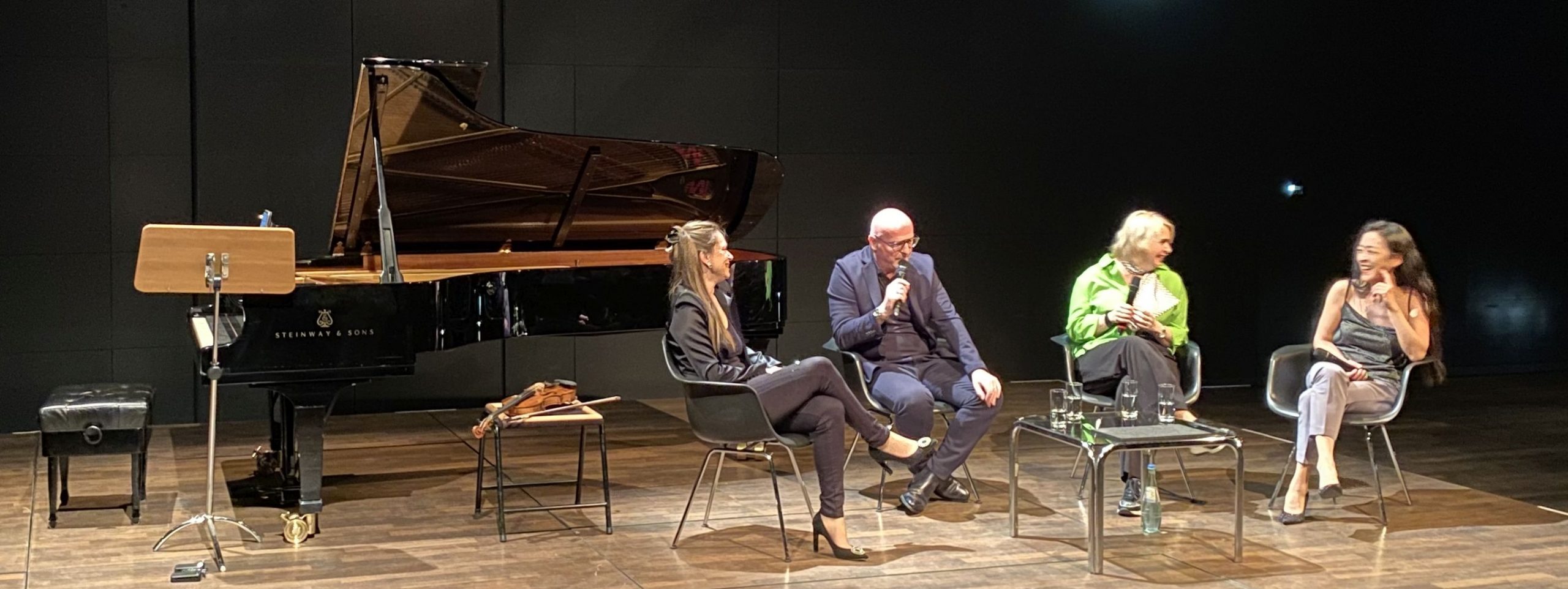
Ekman + Eyal
Die Ankündigung im Programm der Staatsoper in Berlin zur Aufführung von 2 Tanzstücken (1) Alexander Ekman und (2) Sharon Eyal im Programm spricht dementsprechend von Tänzer:innen des Staatsballetts Berlin mit Musik vom Tonträger. Das hohe Haus hat es mit den beiden Stücken geschafft, das reformierte Ballett in das 21. Jahrhundert zu retten. Dazu gehört neben neuen Bewegungsformen, die freieren Umgang mit dem Standardrepertoire des Balletts erlauben, auch die Musik der jungen Generation in die Staatsoper reinzulassen. Ja genau, dazu gehört Technomusik in der Staatsoper. Das Publikum hat sich deutlich verjüngt und so manchem älteren Herrn oder Dame fliegt da schon mal das Blech weg. Die Clubszene in Berlin hat ihre balletttänzerische Erweiterung gefunden mit ihrer Musik als Kunstform. Das gelingt besonders durch die Musik von Ori Lichtik „Strong“. Die provokanten Kostüme, die gekonnt mit Genderrollen spielen, ergänzen auf eindrückliche Weise die kraftvollen Ausdrücke der Tanzenden. Anspielungen an Maurice Béjart’s Bolero oder „Le sacre du printemps“ erfreuen Tanzbegeisterte. Gruppendynamik, Solo und Pas de Deux bauen dennoch auf dem klassischen Figuren- und Konstellationsrepertoire auf. Auch oder gerade in der Clubszene der Realität gibt es die Feuervögel, Flamingos und schwarzen Schwäne. Zur Vorbereitung auf den Tanzabend empfiehlt sich der Besuch in einem der Berliner Clubs. Gerne auch einmal wieder in den Berliner Zoo gehen und die Haarpracht der Orang-Utans in der Bewegung bewundern. Die uns genetisch sehr Verwandten haben uns in puncto Haarpracht, besonders auch im Alter, einiges voraus. Mehr Bewegungsfülle und Begeisterung für Bewegung wecken beide Stücke auf nachhaltige Weise. „Nobody leaves the room unmoved“. Ein bewegender, tänzerischer Abend Unter den Linden.
Visual
Key visuals have the potential to appeal to us like an own language. From a communication point of view the message is simple. You send a message from your visual appearance even if you do not intend to do so. Hence, better think about it briefly before you go public. The receiver might interpret your visual statement differently from you or other peers, but you offer a coherent version of your activity or appearance. Be it politicians (Merkel) or others, frequently memory allows only for key visuals to make lasting impressions or for something or someone to enter into collective memory of a decade or even a century. Repetition, also from different sources, plays a major part in this. It is surprisingly still uncommon to hire persons in charge of key visuals for a person, an organisation or a festival. Haphazard treatment of key visuals as part of marketing is probably an underestimation of the lasting impact of a coherent visual message. Stability and repetition are key here, rather than the wide-spread ad-hoc approaches to marketing. Only on the margin of the exposition devoted to Philippe Apeloig “Des esquisses à l’affiche” (BnF) this lesson can be learned. The merit of the exposition is the opening-up of the process of creation. Posters, graphics and typescripts all contribute to the overall visual message. Achieving coherence in the thousands of choices demands an aesthetic point of view. This may blend aesthetic languages of a decade and reflections on the subject. Catching an audience at the time of affluence of images, movies and accelerated rhythms of daily life remains a challenge. For the “Fête du Livre” Apeloig has achieved this in a memorable way, well worth a tiny exposition of donations from a master in visual communication. 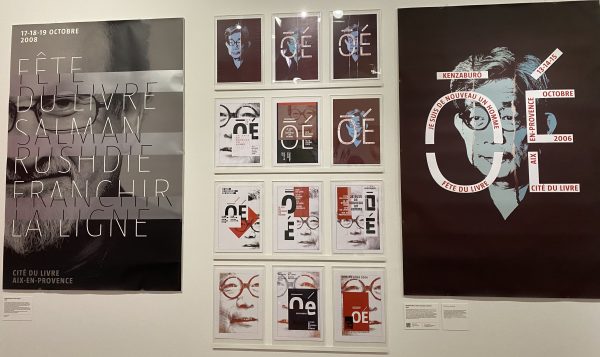
Altern
Wissenschaffende, wie Kunstschaffende, haben ihre Modelle. Meistens sind es abstrakte Gedankengebilde, gerne noch mit schönen mathematischen Formeln verziert. Prototypen haben ihren eigenen Charme. Forschung über das Altern hat es da nicht so leicht seine ästhetischen Modelle auszustellen. Dabei macht uns die Natur einiges vor, wie das geht. Neben dem Axolotl sind Würmer mit nachwachsenden Gliedmaßen vielversprechende Ansätze der Erneuerung im Alternsprozess. Jedes Frühjahr ist die alte Eiche eine inspirierende Quelle der Anpassungsfähigkeit. Hitze, Klimawandel, saurer Regen und Pilze hat sie jahrhundertelang bewältigt. Jedes Frühjahr freuen wir uns über die Zeichen von Vitalität und grüner Pracht. Wiedermal Schädlinge nach Trockenheit abgewehrt und Resilienz bewiesen. Wir möchten es nicht gerne hören. Sie wird uns wohl überleben, dank ihrer Kraft der Ruhe. 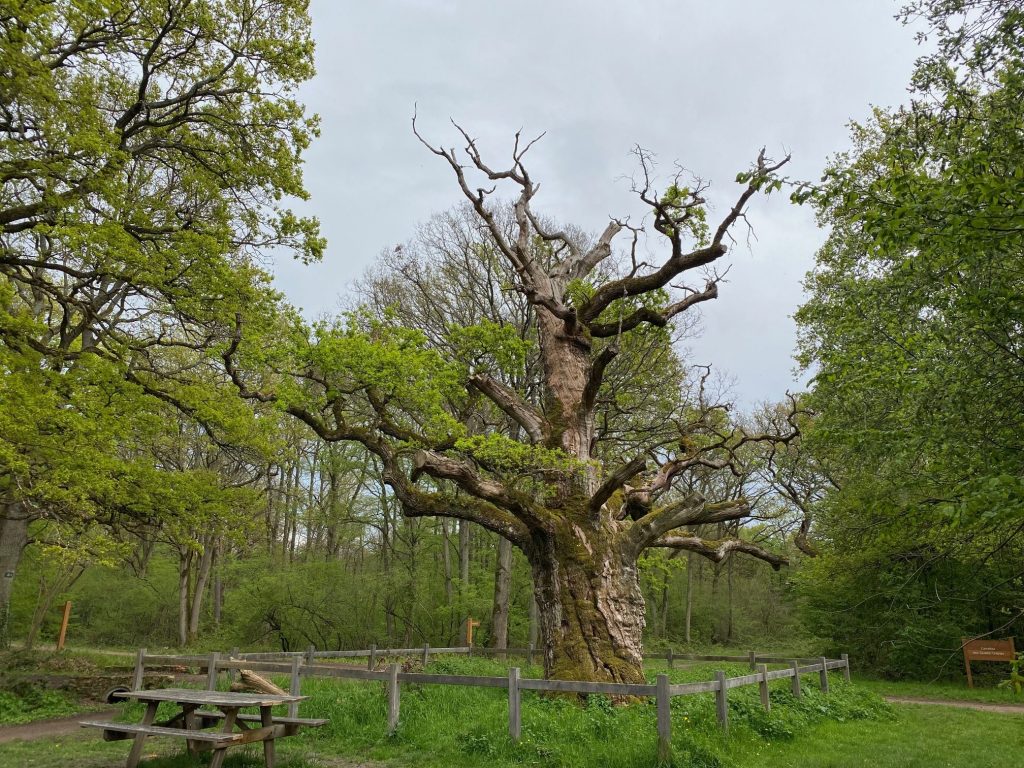
Flotow Martha2
Aus dem kleinen Büchlein von Horst Zänger „Aus Liebe zur Musik“, geht hervor, dass wohl schon Richard Wagner in seiner Zeit als Dirigent in Dresden mehrmals seit dem 25.3.1848 die Martha aufgeführt hatte, die erst am 25.11.1847 in Wien uraufgeführt worden war (Zänger, 2012, S.22). Das Urteil des sehr germanisch daherkommenden 35-jährigen Wagners über die eher italienisch anmutende, auf französischen Lehrmeistern beruhenden Werke von Flotow war wohl recht unfreundlich. Franz Liszt dirigierte die Martha in Weimar wohl noch vor Wagner in Dresden (Ghesquière 2012, S.18). Die Opernhäuser wollten eben ihr Hemd in den aus Österreich mit seiner Wiener Klassik wehenden Wind hängen, Qualität hin oder her. Volle Häuser zahlten sich damals genauso aus wie heute. Cosima Liszt, Richard Wagners spätere zweite Frau war ein Bindeglied zwischen beiden Familien, die die populäre Oper von Flotow hinreichend gekannt und studiert hatten.
Rivalitäten und Wettbewerb gehören eben zur Musik wie zum Drama des täglichen Lebens. Einem offenen Antisemitismus von Wagner stellte der Komponist Flotow zumindest in seiner Zeit als Intendant in Schwerin eine offenere Personalpolitik entgegen. Gelebte und erfahrene Offenheit in Paris hatten ihn vielleicht gegen Antisemitismus immunisiert. Das gibt Hoffnung und betont den frühen Erfahrungsaustausch der Kulturen jenseits der deutsch-französischen Beziehungsdichte.


